Author: Ron Graham
simplybible.com


Outline of Paul’s Third Missionary Journey —Revisiting churches, then to Jerusalem
This is our third study on the journeys of Paul, and we look at Paul's third missionary journey (Acts 18:23 to 21:17).
Stages of the third journey
- Between his second and third journeys, Paul spent some time working with the church in Syrian Antioch (Acts 18:22-23). From there, Paul set off on the third journey.
- First he visited the churches again in Galatia and Phrygia (Acts 18:23).
- Paul next returned to Ephesus where his work caused an uproar (Acts 19:1-41).
- Paul then revisited Macedonia and Greece, afterward going to Troas and then to Miletus (Acts 20:1-38).
- From Miletus Paul sailed to Caesarea and then went to Jerusalem (Acts 21:1-17).
1. In his second journey, Paul had visited Ephesus briefly (Acts 18:19-21). He begins his third journey overland, revisiting churches where he had previously been (Acts 18:23). Paul continued on a route that eventually brought him to Ephesus (Acts 19:1).
2. While Paul was doing all this travelling, there was something already going on at Ephesus, concerning a preacher called Apollos. It also involved Priscilla and Aquila whom Paul had made friends with on his second journey (Acts 18:1-3). Luke inserts an account of this episode before describing Paul's work in Ephesus (Acts 18:24-28).
3. One thing Paul did in Ephesus was to correct the lack of understanding about baptism among some disciples, just as Priscilla and Aquila had done earlier with Apollos (Acts 19:1-7).
4. Paul tried to establish a regular ministry preaching in the synagogue, but this lasted only three months and Paul moved his venue to a school and preached there successfully for two years (Acts 19:8-10).
5. Paul did marvelous miracles in Ephesus. People renounced their inferior magic. But this sparked a near riot in the city (Acts 19:11-41).
After Ephesus
6. Paul revisited Macedonia and Greece (Achaia) as he had planned (see Acts 19:21). He then went to Troas where Eutychus fell out the window while Paul was preaching (Acts 20:1-12).
7. Next Paul went to Assos, and on to Miletus, a coastal town near Ephesus. There Paul made his touching farewell speech to the elders from Ephesus (Acts 20:13-38).
8. Paul sailed from Miletus around by Rhodes and past Cyprus, then down to Tyre for a week's respite with the kindly disciples there. After that he made his way to Caesarea to stay with Philip the evangelist. As in Tyre, here also in Caesarea there were prophecies that bode ill for Paul in Jerusalem. But he was resolute (Acts 21:1-14).
9. Finally, Jerusalem (Acts 21:15-17).
Solid Companions
In this third journey, we notice that Paul, in most stages, had many companions travelling with him, including Luke himself at times. People travelled ahead to make arrangements for Paul. People gave him lodging. They prayed, even wept with him. Paul was facing serious problems ahead. He needed the care of his fellow disciples.
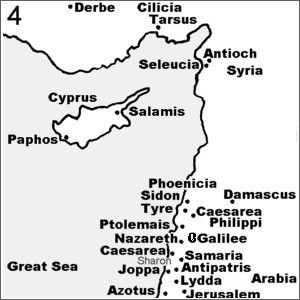
➤ DONATE
to simplybible.com Webservant Ron Graham
Home | Bible Topics | The Hub | List | Next www.simplybible.com Copyright © Ron Graham 2001

Paul’s Third Missionary Journey: Key Points, Map, And Lessons
Categories Bible Study Topics
In this article, we will explore Paul’s third missionary journey looking at key points, locations, lessons we can learn, and a map of his journey.
The book of Acts in the Bible tells of the apostle Paul and his missionary work. Once one of the biggest persecutors of the Christian church, Paul’s story is truly remarkable. After Paul’s conversion to Christianity, he became one of the most significant figures in the early Christian church, traveling more than 10 000 miles through Asia and Europe to spread the gospel.
Paul’s third missionary journey lasted approximately 4 years, from 53 – 57 AD. The purpose of this journey was to revisit and strengthen the churches planted during his first two missionary journeys and to continue to teach those converted and evangelize to unbelievers. (Acts 18 – 21)
Paul strengthened the churches, and more people were converted to Christianity. He also performed many miracles, healed the sick, cast out demons, and even resurrected a man from the dead. Paul’s third missionary journey ended in Jerusalem after the Jews captured him and handed him to Roman authorities.
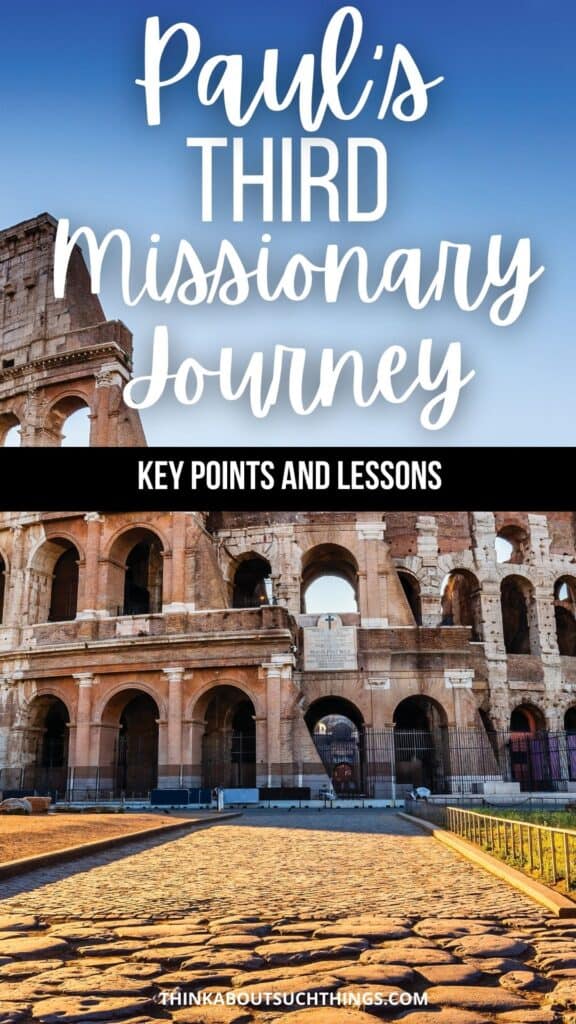
What Happened On Paul’s Third Missionary Journey?
Paul’s third and final missionary journey before his famous trip to Rome was the longest of all his missionary journeys and lasted approximately four years. This was so that he could finally revisit and strengthen the churches planted during his first and second missionary journeys . He did, however, continue preaching the gospel to unbelievers at the same time, and many more Jews and gentiles were converted.
When you read through Acts 18:23-21:16 you will see a lot of movement from city to city without out a lot of details on what happened in those places. I have tried my best to find the key locations and highlights from this journey.
Now, his third missionary journey took Paul firstly to Galatia, Phrygia, Derbe, Lystra, Iconium, and Antioch of Psidian, where he visited and encouraged the churches.
Now God worked unusual miracles by the hands of Paul, 12 so that even handkerchiefs or aprons were brought from his body to the sick, and the diseases left them and the evil spirits went out of them. Acts 19:11-12
Paul then traveled to Ephesus, where he stayed for more than 2 years. He preached to both Jews and Greeks and met 12 of Apollos’ disciples, whom he led to be baptized with the Holy Spirit.
Paul also performed many miracles in Ephesus, healing the sick and driving out demons. The name of Jesus became respected and feared while Paul was there, so much so that even the magicians in Ephesus burnt their scrolls and books. The gospel rapidly spread throughout Ephesus, and many converted to Christianity.
So much so that silversmiths that produced idols started a riot because the gospel was bad for business for them!
During this time, Paul writes 1 Corinthian.
Macedonia and Greece
From Ephesus, Paul traveled to Macedonia through Philippi, Thessalonica, and Berea, strengthening the churches and encouraging the believers. From there, he continued to Greece, where he stayed for three months. He also wrote 2 Corinthians and Romans around this time.
Paul wanted to travel to Jerusalem from Greece but was warned that Jews were planning to ambush him, so he decided to take a different route to Jerusalem. He traveled back through Macedonia, via Corinth, Berea, and Thessalonica, to Philippi, where he and Luke, who joined him for a part of the journey, observed the Passover Meal.
From Troas to Miletus
Seated in a window was a young man named Eutychus, who was sinking into a deep sleep as Paul talked on and on. When he was sound asleep, he fell to the ground from the third story and was picked up dead. 10 Paul went down, threw himself on the young man and put his arms around him. “Don’t be alarmed,” he said. “He’s alive!” 11 Then he went upstairs again and broke bread and ate. After talking until daylight, he left. 12 The people took the young man home alive and were greatly comforted. – Acts 20:9-12
From Philippi, they traveled by ship to Troas, where they met Timothy and representatives from other churches, who were all traveling to Jerusalem. Paul stayed in Troas for a week, preaching to the local believers. As you can read from Acts 20:9-12 a small boy fell from a window.
We don’t know if Paul prayed for this young boy to be resurrected or if he was still alive and prayed for healing or a miracle. All we know is God did something and it was amazing!
From there, they traveled through Assos, Mitylene, and Trogyllium to Mellitus, where he met the Elders from Ephesus.
From Cos to Jerusalem
They traveled further through Patara to Tyre, where they spent a week before continuing to Caesarea through Ptolemais. In Caesarea, the believers begged him not to go to Jerusalem, as they feared he would be captured, but Paul still continued to the home of Mnason in Jerusalem. Paul was caught in the temple during his required ritual of purification, and this ended his journey.
Check Out Paul’s Other Journeys

Maps of Paul’s Third Missionary Journey
Maps are a great way to visually see all the route that Paul took. Down below is a map of each of Paul’s stops and the way he went. I hope you find it helpful like I do.
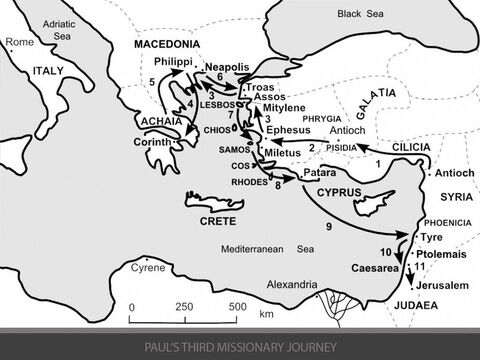
Key People On Paul’s 3rd Journey
Every journey Paul was on he brought some companions with him. This time around we see a much smaller group than his second journey .
The Apostle Paul, and his writings make up a considerable portion of the New Testament. Paul was born in Tarsus, in present-day Turkey, and he was initially known as Saul. He was a zealous persecutor of Christians when he was a pharisee until he had a life-changing encounter with Jesus Christ on the road to Damascus.
After this experience, Saul became Paul and spent the rest of his life spreading the gospel of Jesus. His teachings on salvation by faith in Jesus Christ and the importance of unity in the church are still VERY relevant today.
Timothy was a young man who accompanied the Apostle Paul on his missionary journeys throughout the Mediterranean. According to the Bible, Timothy’s mother was Jewish, but his father was a gentile.
Despite this mixed heritage, Timothy became a devoted Christian and a trusted companion of Paul. The letters that Paul wrote to Timothy provide valuable insight into early Christian doctrine, leadership and the challenges faced by the early Church.
Luke, was a physician and one of the four Gospel writers in the New Testament. He is believed to have been a close companion of the apostle Paul and to have written the Acts of the Apostles as well. Luke’s Gospel recounts the life, teachings, miracles, and crucifixion of Jesus. Luke is also the only Gospel writer to include parables such as the Good Samaritan and the Prodigal Son.
FAQ About Paul’s First Missionary Journey
Here are some simple FAQ that most people have about Paul’s missionary journeys.
You can read about the Apostle Paul’s third journey in Acts 18:23-21:16.
The third journey took place between 52-57 AD.
Timothy and Luke accompanied the apostle Paul.
Paul and his companions traveled through Turkey, Greece, Lebanon, and Israel.
Paul traveled around 2,700 miles! Pretty amazing as most of this was done by foot and boat.
Highlights of Paul’s Third Missionary Journey
Some important things during Paul’s third missionary journey are worth mentioning.
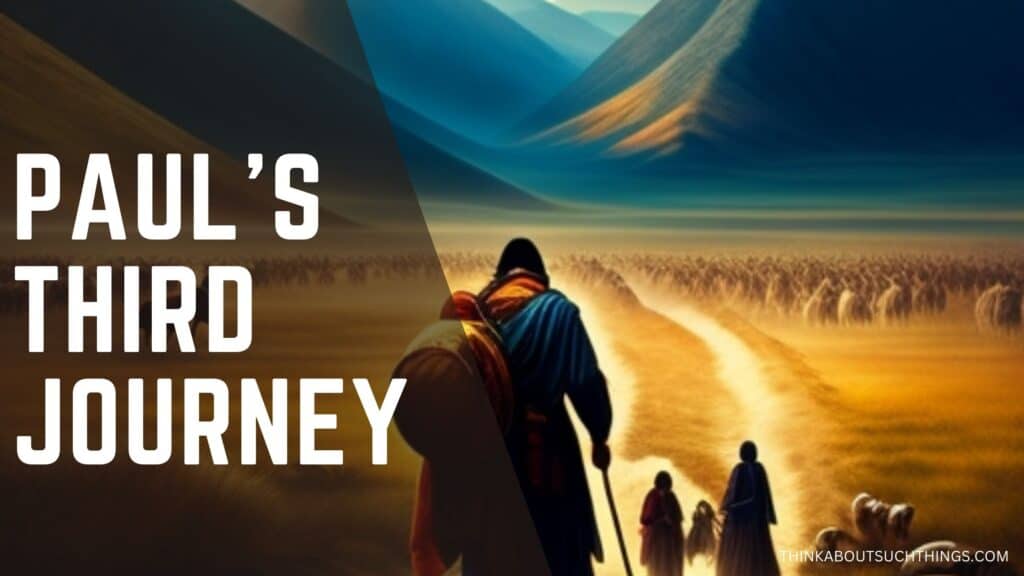
- Apollos – A young man preached about Jesus in Ephesus, but he only knew a part of Jesus’ story and wasn’t aware of Jesus’ crucifixion and death. Aquila and Priscilla , whom Paul met during his second journey, took Apollos under their wing, teaching him all he needed to know. Apollos became a very influential Christian teacher thanks to their guidance.
- Paul performed great miracles – While in Ephesus, Paul did great miracles and drove out demons. Acts 19: 12 says, “…even handkerchiefs and aprons that touched his skin were carried away to the sick, and their diseases left them and evil spirits came out of them”.
- “Seven sons of Sceva – In Acts 19: 13-16, we read of the sons of a high priest who tried to drive out demons in the name of “Jesus whom Paul proclaims.” The demon responded: “Jesus, I know, and Paul, I recognize, but who are you?” The demon-possessed man then overpowered the seven men, who fled, naked and wounded.
- Resurrection of Eutychus – In Troas, Paul was preaching in a room on the third floor. He spoke late into the night, and one of the men, Eutychus, fell asleep while sitting at a window. Eutychus fell to his death, but Paul went down, resurrected him, and went back upstairs to eat.
- Meeting with Ephesian elders – While in Mellitus, Paul called the elders from Ephesus to meet with him. While together, he prayed for and encouraged them. He also warned them against false teachers and said they wouldn’t see him again, predicting what would happen to him in Jerusalem.
- Prophet in Caesarea – While Paul stayed with Philip the Evangelist in Caesarea, a Judean prophet named Agabus took Paul’s belt, tying it around his legs and wrists. He then prophesied that the man the belt belonged to would be bound that way in Jerusalem and handed over to the Roman authorities.
- Jerusalem – Even though he was begged not to go, Paul said he was prepared to be imprisoned or killed for Jesus. While in Jerusalem, he went to the temple for the required purification ritual. Some Jews recognized him and instigated a crowd against him who caught and bound him and handed him over to the authorities, as was prophesied.
Important Lessons From Paul’s 3rd Missionary Journey

There are many lessons that believers can learn from Paul’s life, and several important lessons from what happened on his third missionary journey.
- Young Christians need encouragement – The purpose of Paul’s third missionary journey was to strengthen and encourage the churches he planted during his first two missions. He did this knowing that people young in their faith needed encouragement to endure the hardships that might come.
- Importance of a relationship with Jesus – The seven sons of Sceva did not have a relationship with Jesus and could, therefore, not drive out demons as Paul did. Paul performed great miracles because he had a relationship with Jesus.
- God can use our mistakes to grow His Kingdom – The error made by the seven sons of Sceva caused the name of Jesus to be respected and feared in Ephesus at that time. Even the magicians burnt their scrolls and books out of fear for Jesus, and the gospel spread rapidly.
- Nothing is impossible with God – According to Acts 19: 11, God performed great miracles through Paul, and he even resurrected a man. Paul himself often mentioned, in his letters, that it was only by the power of the Holy Spirit in him that he was able to do these things.
- Do God’s will, regardless of the cost – Despite all the warnings and prophesies, Paul insisted that God’s will be done, and he went to Jerusalem, as guided by the Holy Spirit. His obedience cost Paul his freedom and, eventually, his life. Even while in prison, Paul continued to preach the gospel.
On Paul’s third and last missionary journey from 52-57 AD, he revisited the churches planted during his first two missionary journeys to strengthen and encourage them. He also preached the gospel and saw many more Jews and gentiles converting to Christianity.
His third missionary journey ended in Jerusalem, where he was captured by the Jews and handed over to Roman authorities.
I hope you have enjoyed this study on paul’s third journey. If you would like to leave a comment below I would love to hear from you and what God is doing in your life.
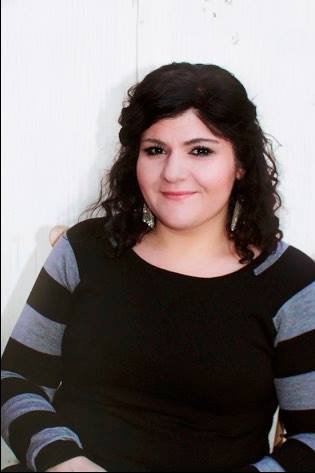
Melissa is a passionate minister, speaker and an ongoing learner of the Bible. She has been involved in church and vocational ministry for over 18 years. And is the founder of Think About Such Things. She has the heart to equip the saints by helping them get into the Word of God and fall more in love with Jesus. She also enjoys family, cooking, and reading.
She has spoken in churches in California, Oregon, Texas, and Mexico and has been featured in Guidepost Magazine and All Recipes Magazine. Read More…
I accept the Privacy Policy
Paul’s Third Missionary Journey ( Acts 18:22–21:17 )
C. a.d. 52–57.
Paul’s third missionary journey traversed much the same ground as his second (see map ). Passing through Galatia and Phrygia, he proceeded directly to the great port city of Ephesus. After three years of preaching and teaching there, Paul traveled again through Macedonia and Achaia, strengthening the believers, and then finished with a visit to Jerusalem.

Paul's Third Missionary Journey
In the short stay which Paul had made at Ephesus on his return from his second journey, he had promised to come again to that city, if the providence of God should allow it. This promise he was enabled to fulfill, after a hasty visit to the metropolis of the Jewish nation, and a longer sojourn in the first metropolis of the Gentile Church.
It is evident that it was not Apostle Paul's only object to proceed with all haste to Ephesus, nor indeed is it credible that he could pass through the regions of Cilicia and Lycaonia, Phrygia and Galatia, without remaining to confirm those churches which he had founded himself, and some of which he had visited twice. We are plainly told that his journey was occupied in this work, and the few words which refer to this subject imply a systematic visitation. Paul would be the more anxious to establish them in the true principles of the Gospel, in proportion as he was aware of the widely-spreading influence of the Judaizers.
It may be considered probable that Timothy was with the Apostle through the whole of this journey. Abundant mention of him is made, both in the Acts and the Epistles, in connection with Apostle Paul's stay at Ephesus and his subsequent movements (Acts 19:22, 20:4, 1Corinthians 4:17, 16:10, 2Corinthians 1:1, Romans 16:21).
Of the other companions who were undoubtedly with Paul at Ephesus, and who may have traveled with him from Syrian Antioch on his third journey, or went with him after he left Ephesus, we cannot say with confidence. Erastus, however, may have remained with him since the time of his first visit to Corinth (Acts 19:22), and Caius and Aristarchus (Acts 19:29) since the still earlier period of his journey through Macedonia.
Whatever might be the exact route which the Apostle Paul followed from Antioch in Syria to Ephesus, he would certainly have revisited those churches which before had known him as their teacher. He would pass over the Cilician plain on the warm southern shore, and the high table land of Lycaonia on the other side of the Pass of Taurus. Paul would see once more his own early home on the banks of the Cydnus and Timothy would be once more in the scenes of his childhood at the base of the Kara-Dagh.
After leaving Tarsus, the cities of Derbe, Lystra, and Iconium, as well as Antioch in Pisidia, would be the primary objects in Paul's progress. Then we come to Phrygia, a vague and indeterminate district which he had visited at least once before (Acts 16:6).
The great road from Ephesus ran east near the cities of Laodicea, Colossae and Hierapolis, then continued to Iconium and ultimately to the Euphrates. We should naturally suppose that the Apostle would approach the capital of Asia along this well-traveled line. But the arguments are so strong for believing that Apostle Paul was never personally at Colossae (see Colossians 2:1), that it is safer to imagine him following some road farther to the north.
Thus, then, we may conceive Paul, during his third evangelistic journey, arrived at that region where he was formerly in hesitation concerning his future progress (Acts 16:6 - 8) and then making his way to Ephesus.
Previous - Next
List of All Chapters

Paul’s Missionary Journeys: The Beginner’s Guide
by Ryan Nelson | Jul 6, 2020 | Bible topics
Paul’s missionary journeys helped spread the gospel throughout much of the ancient world. Over the course of his ministry, the Apostle Paul traveled more than 10,000 miles and established at least 14 churches.
The Book of Acts records three separate missionary journeys that took Paul through Greece, Turkey, Syria, and numerous regions you won’t find on modern-day maps. Some scholars argue that Paul also took a fourth missionary journey, since parts of the New Testament appear to reference travels that may have taken place after the events in Acts.
Paul’s travels played a crucial role in the formation and development of the early Christian church. Many of the communities he encountered on these missionary journeys were the same ones he wrote to in his pastoral epistles.
In this guide, we’re going to follow Paul’s footsteps as he travelled across the ancient world, looking at the places he went and the major events that took place along the way. At times it can be challenging to distinguish between ancient cities, provinces, and regions (and there are sometimes multiple names that refer to the same area), so as we go, we’ll make some of those distinctions more clear.
Paul’s first missionary journey (Acts 13–14)
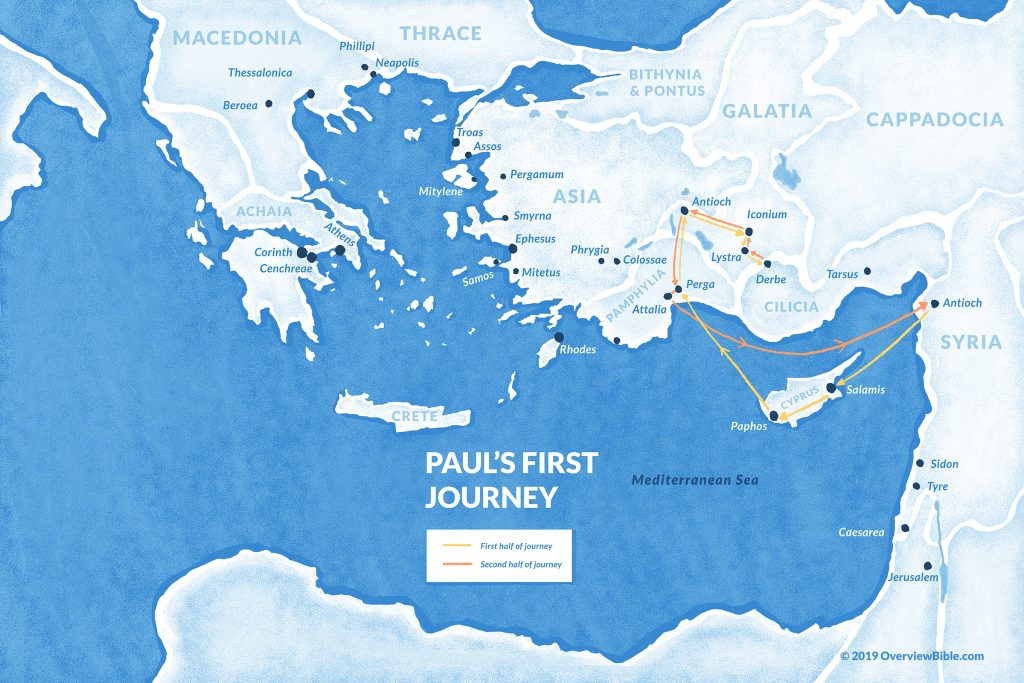
Paul’s first missionary journey began in Antioch. You may notice that maps of the ancient world often have two cities labelled Antioch. They’re both named after Antiochus, father of Seleucid I. The Antioch in Acts 13 was the third largest city in ancient Rome and capital of the province of Syria. Today, it’s part of southern Turkey. The other Antioch was part of Pisidia, an ancient region which is also now part of Turkey. Your Bible likely refers to it as Pisidian Antioch or Antioch of Pisidia.
In Antioch (the big city in Syria), the Holy Spirit singled out Paul and Barnabas from the believers worshiping there, and sent them on their first missionary journey.
Paul’s first journey took him by boat to the Roman province of Cyprus. Today, Cyprus is a country known as the Republic of Cyprus. It’s a mediterranean island south of Syria. Paul and Barnabas arrived in the port city of Salamis, where John Mark (who was possibly Barnabas’ cousin), helped them share the gospel in Jewish synagogues.
From Salamis, the group moved across the island to Paphos, where they were met by a Jewish sorcerer named Bar-Jesus (also known as Elymas the sorcerer). This sorcerer worked for the governor—Sergius Paulus—who sent for Paul and his companions because he wanted to hear the word of God. Elymas opposed them and tried to turn Sergius from the faith, and so Paul, filled with the Holy Spirit, called him a “child of the devil” and struck him blind. Sergius saw what happened, and believed.
Ironically, Elymas meant to steer Sergius away from Christ, but he became the very vehicle God used to draw Sergius toward him.
From Paphos, Paul and company set sail for the Roman province of Pamphylia, located in modern day Turkey. They arrived in the city of Perga, where John Mark left them and returned to Jerusalem (which, interestingly, was in the opposite direction from where they just came). We don’t know why John Mark decided to leave, but this would later create a rift between Paul and Barnabas.
Together, Paul and Barnabas travelled to Pisidian Antioch, where local synagogue leaders invited them to speak. Initially, the Jewish people were receptive to the gospel, but a week later, the entire city gathered to hear Paul and Barnabas, and the Jewish leaders became jealous. They resisted the message of the gospel, and so Paul and Barnabas made an important pivot: they began preaching to the Gentiles.
Many of the Gentiles believed the gospel, and Luke (the traditional author of Acts) tells us that:
“The word of the Lord spread through the whole region. But the Jewish leaders incited the God-fearing women of high standing and the leading men of the city. They stirred up persecution against Paul and Barnabas, and expelled them from their region.” —Acts 13:49–50
Driven out of Pamphylia, Paul and Barnabas travelled to Iconium, an eastern city in the region of Phrygia. Iconium still exists today as the Turkish city of Konya.
Once again, Paul and Barnabas spoke in the synagogue, where Jews and Greeks alike accepted the gospel. But the Jews who didn’t accept it stirred up trouble, even as Paul and Barnabas began performing signs and wonders (Acts 14:3). As support for Paul and Barnabas grew, so did the opposition they faced, and eventually, they became aware of a plot to abuse and stone them. So they left.
Fleeing the threat in Iconium, Paul and Barnabas left Phrygia altogether and travelled to Lystra, a city in the province of Lycaonia. Here, Paul healed a man who was lame.The locals who witnessed this miracle thought Paul and Barnabas were gods in human form, calling Barnabas Zeus and Paul Hermes. The priest from the temple of Zeus brought bulls and wreaths to offer sacrifices to them.
Paul and Barnabas attempted to redirect their praise to God, but struggled to keep the crowds from offering sacrifices to them.
Jews came from Antioch and Iconium and continued what they’d started. They riled up the crowds and convinced them to stone Paul. Believing he was dead, they dragged him outside the city. When the disciples gathered around him, Paul got up and went back inside the city.
Then Paul and Barnabas went to Derbe, another city in Lycaonia. There, they “won a large number of disciples” (Acts 14:21).
The return to Antioch
After a time in Derbes, Paul and Barnabas went back the way they came, working their way through Lystra, Iconium, Pisidian Antioch, and Perga. In each city, they encouraged the believers there and strengthened their faith, as they would continue doing on their future missionary journeys. They did, however, stop in a new Pamphylian city on the way: Attalia. Acts only mentions it in passing, but presumably, they established a community of believers there as well.
From there, they skipped a return voyage to the island of Cyprus and went straight back to Antioch (the big one), where they told the church what happened on their journey.
Paul’s second missionary journey (Acts 16:23–20:38)
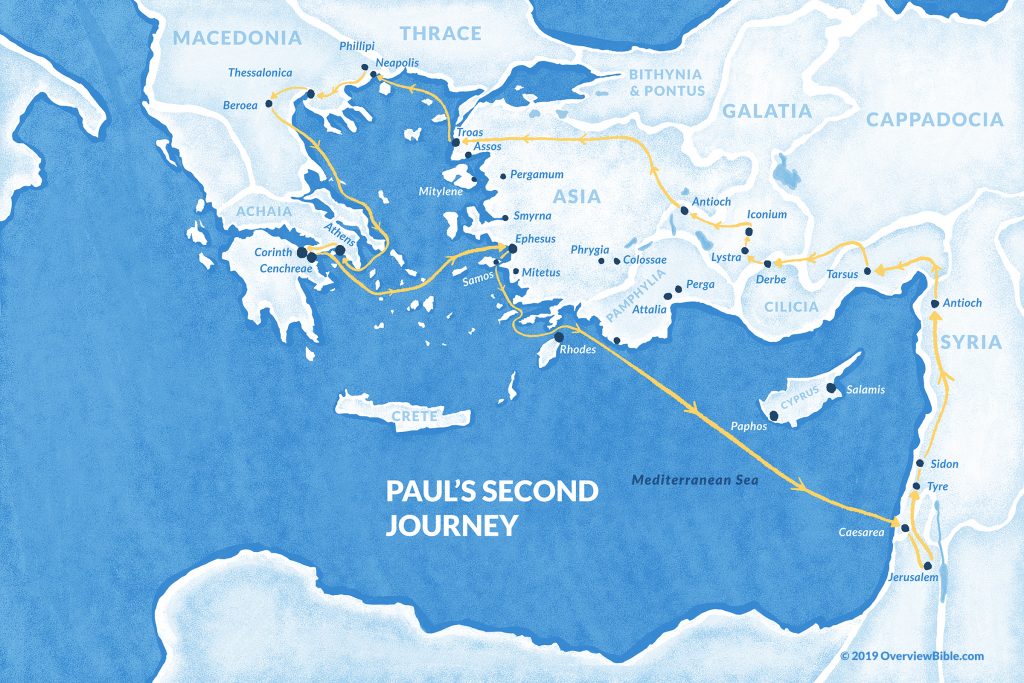
Paul’s second missionary journey established many of the churches he would later write to in his pastoral epistles. Interestingly, this may have happened in part because of a “sharp disagreement” he had with Barnabas. Paul’s original plan was to essentially have a rerun of their first trip, strengthening the communities they’d formed in each city and telling them what the Council of Jerusalem had ruled in regards to Gentile believers.
But Barnabas wanted to take John Mark—who had left them shortly into their previous journey. Paul was so opposed to the idea that they parted ways, initiating two separate missionary journeys. Barnabas took John Mark and went with the original plan, making their way back to the island of Cyprus. Paul took a man named Silas and travelled through the provinces of Syria and Cilicia.
The first cities that Acts mentions by name on Paul’s second journey are Derbe and Lystra. At this time, Paul and Silas picked up a new companion: Timothy.
The locals spoke highly of Timothy, and Paul wanted to bring him along even though he was half Greek, which meant local Jews would have a harder time accepting their message. Out of concern for these local Jews, Paul circumcised Timothy—even though, ironically, one of the things they were coming to tell Christians was that Gentiles didn’t have to be circumcised. (See Acts 16:3–4.)
Acts doesn’t specify where in Phrygia Paul and his companions stopped, but since he’d established a church in Iconium on the first trip, that community would’ve been on his mind (even though last time he was there, people had plotted to stone him). Interestingly, Acts notes that Paul and his companions journeyed here after they were “kept by the Holy Spirit from preaching the word in the province of Asia” (Acts 16:6).
Just north of Phrygia was the province of Galatia. Acts makes no mention of what happened here, but this is the province Paul wrote to in his letter to the Galatians . Interestingly, part of the purpose of Paul’s second trip was to share the news from the Council of Jerusalem regarding the Law of Moses and whether or not Gentiles (or Christians in general) should be expected to follow it. The council decided the Torah didn’t apply to Gentile believers (though they did hang on to a few rules). But by the time Paul wrote the Book of Galatians, Christians there were feeling pressure to obey the law (particularly in regards to circumcision) in order to be saved.
From Galatia, Paul’s group traveled west, until they reached the border of Mysia—a western region in the province of Asia, which is now part of Turkey. They intended to head north to the region of Bithynia, “but the spirit of Jesus would not allow them to” (Acts 16:7). So they passed by Mysia and headed to the city of Troas. Here, Paul had a vision of a man in Macedonia, begging him to “Come over to Macedonia and help us.” Paul took this vision as a sign that God was calling them to Macedonia, which was across the Aegean Sea.
From Troas, Paul and his companions sailed across the Aegean Sea, making a pitstop on the island of Samothrace before landing in Neapolis and then traveling to Philippi. In Philippi, they spoke with women outside the city gate. One of them was a wealthy cloth dealer named Lydia. After her household was baptised, she persuaded Paul’s group to stay with her for a while.
Later, Paul, Silas, and the others were confronted by a spirit-possessed slave woman who could predict the future. She followed them for many days, shouting, “These men are servants of the Most High God, who are telling you the way to be saved” (Acts 16:17). Paul became so annoyed that he cast out the spirit. Her owners were furious, because they had been profiting off of her fortune telling. So they turned the local magistrates against them, claiming Paul and Silas were stirring up trouble and trying to get Roman citizens to believe and do illegal things.
The authorities had Paul and Silas severely flogged and thrown in prison. Late at night, while they were worshiping, an earthquake shook the foundations of the prison, opened the doors, and freed the prisoners from their chains. When the jailer awoke and saw the doors open, he prepared to kill himself. But Paul stopped him and assured him everyone was still in the prison.
After listening to Paul and Silas share the gospel, the jailer believed in Jesus and had his whole household baptized.
The next morning, the magistrates ordered Paul and Silas released. Paul revealed that they were Roman citizens, who had just been beaten and imprisoned without trial, and the authorities became afraid. Paul and Silas returned to Lydia’s house, and then left the city of Troas.
After passing through the Macedonian cities of Amphipolis and Apollonia, they arrived in Thessalonica. Since Thessalonica had a synagogue, Paul turned to his usual method—preaching the gospel on the Sabbath. Over the course of three weeks, he achieved the usual result—many Jews and Greeks alike embraced the gospel . . . and those who didn’t were outraged by it.
At night, the Thessalonian believers sent Paul and his companions away to the nearby city of Berea.
The Bereans listened eagerly to the gospel and carefully examined the Scriptures to see if they supported Paul’s claims. Many Jews and Greeks became believers, but some agitators from Thessalonica heard Paul was in Berea, and they stirred up the crowds. Silas and Timothy stayed in Berea, while Paul was escorted out of Macedonia to Athens.
In the first century, Athens was in the region of Achaia, just south of Macedonia. Today, it’s the capital of Greece, and the largest city in the country.
Paul was essentially waiting around for Silas, Timothy, and the others to rejoin him. But while he waited, he noticed that Athens was full of idols. He debated with philosophers in both the synagogue and marketplace. Some Athenians were open to his ideas, and they were eager to discuss them. One idol in particular caught his eye—it had an inscription that read: “to an unknown god.” He seized on this as an opportunity to tell them about the “unknown God” who died and rose so that all might have eternal life.
Paul’s message in Athens incorporated observations about what he saw around him as well as quotes from famous Greek philosophers to point back to the gospel. After establishing a group of believers in Athens, Paul headed west to the city of Corinth.
In Corinth, Paul stayed and worked with a couple of Jewish tentmakers named Priscilla and Aquila. Every Sabbath, he preached to Jews and Greeks in the synagogue. Silas and Timothy rejoined Paul here, and Paul began focusing his energy on testifying about Jesus to the Jews.
When the Jews opposed his message, Paul devoted himself to reaching Gentiles, and he left the synagogue. As more Greeks embraced the gospel, the Corinthian Jews brought Paul before the governor, who basically told them to take a hike and refused to help.
Paul stayed in Corinth for a year and a half, and he left with Priscilla and Aquila.
The return journey
Before setting off for Syria, Paul stopped for a vow-fulfilling haircut in the port city of Cenchreae, which was just a hop, skip, and a jump from Corinth. With his companions, he sailed across the Aegean Sea to Ephesus, where he dropped of Priscilla and Aquila, and promised to come back if he could. After a short stay in Ephesus, Paul set sail for Caesarea, which was across the Mediterranean and far to the southeast. From there, he made the trek south to Jerusalem.
Paul’s second missionary journey ended in Jerusalem.
Paul’s third missionary journey (Acts 18:23–20:38)
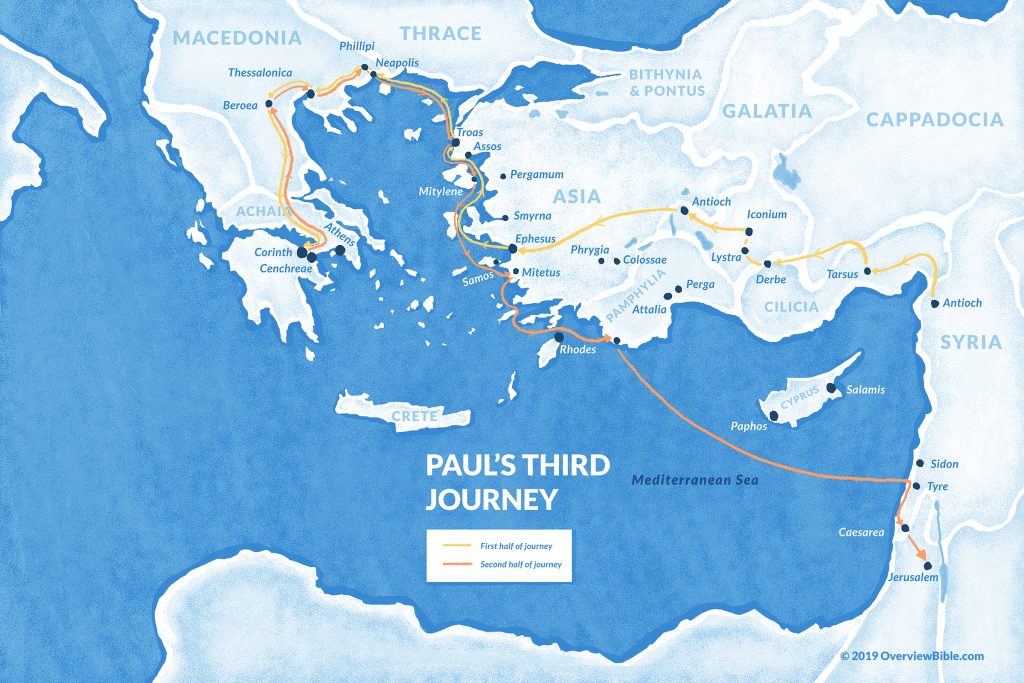
When you read Acts, there’s no transition from Paul’s second missionary journey to his third. His arrival in Jerusalem almost immediately began his next trip. But while his second journey ends in Jerusalem, the beginning of his third journey is actually in Antioch, which is about 300 miles north.
Phrygia and Galatia
From Antioch, Paul once again worked his way west, passing “from place to place throughout the region of Galatia and Phrygia, strengthening all the disciples” (Acts 18:23). This included Derbe, Lystra, and Iconium.
Paul traveled west to Ephesus, the capital of the province of Asia, where he’d left Priscilla and Aquila on his previous journey. Since he’d last visited, a man named Apollos had been preaching part of the gospel, but he didn’t know about the Holy Spirit. So when Paul arrived, he taught the Ephesians about the difference between water baptism and the baptism of the Spirit.
For three months, Paul preached in the synagogues. When people started criticizing Christianity, he left and began holding discussions in a lecture hall.
This went on for two years, and all the while, God used Paul to perform miracles. Even things Paul had touched—handkerchiefs and aprons—healed the sick and drove out evil spirits.
Some Jews thought invoking Paul’s name would let them drive out demons. Seven sons of a chief priest named Sceva said to an evil spirit, “In the name of the Jesus whom Paul preaches, I command you to come out” (Acts 19:13). The spirit replied that it knew Jesus and Paul, but not them, and then it pulverized all seven of them.
As word spread about what happened, people began to revere the name of Jesus. Local sorcerors came to repent, and they burnt scrolls that would have been worth more than 130 years’ worth of wages (Acts 19:19).
Around this time, a local silversmith named Demetrius realized that the future of his business (making idols) was jeopardized by the gospel. The demand for idols was going down all across the province of Asia, but especially in Ephesus, where he lived. So Demetrius gathered all the craftsmen and workers whose businesses were impacted, and stirred the entire city into an uproar. They seized two of Paul’s companions and brought them into a theater.
Paul wanted to address the crowd, but the disciples didn’t let him. Instead, a city clerk told everyone that unless they were going to bring formal charges against the men in a legal assembly, they were in danger of being charged with rioting.
Macedonia and Greece
After things settled down in Ephesus, Paul headed across the Aegean Sea to Macedonia. He traveled throughout the region, encouraging believers, and eventually arrived in Greece, where he stayed for three months. He intended to sail back to Syria (where his journey started), but some people plotted against him, so he took another lap through Macedonia instead.
Along the way, disciples joined Paul from many of the communities he’d ministered to. He had companions from Berea, Thessalonica, Derbe, and the province of Asia. These followers went ahead of Paul to Troas, in Asia. Paul stayed briefly in Philippi, then joined them.
Paul stayed in Troas for seven days. The night before he left, he stayed up late talking in a room upstairs. A young man sat in a window, drifted off to sleep, and fell to his death. Paul threw his arms around the man and declared that he was alive, and he was. Then Paul went back upstairs and continued talking until daylight.
Paul walked from Troas to Assos, which was just to the south, and then sailed for the nearby city of Mitylene. Eager to reach Jerusalem before Pentecost, Paul sailed past Ephesus and stopped in Miletus. There, he met with the leaders of the Ephesian church and essentially told them that he had taught them everything they needed to know, that he would not see them again, and that they needed to be on guard against false teachers. This is when Paul also famously quoted Jesus, sharing words that aren’t recorded in any of the gospels: “It is more blessed to give than to receive” (Acts 20:35).
And then he set sail.
Paul and his companions stopped briefly in Kos, Rhodes, and Patara before heading across the Mediterranean Sea to Phoenicia (the coastal region south of ancient Syria, which is now part of Syria). They arrived in Tyre, where “through the Spirit” (Acts 21:4), the local disciples urged Paul not to go to Jerusalem. He ignored them.
From Tyre, the voyage continued to the port city of Ptolemais, and then Caesarea, where the group stayed with Philip the evangelist (not to be confused with Philip the apostle ). Here, a prophet warned Paul that he would be bound by the Jews in Jerusalem and handed over to the Gentiles.
Still, he pressed on to Jerusalem, and by the end of Acts, the Jewish leaders had handed him over to Roman rulers.
Paul’s fourth missionary journey
Acts explicitly records three distinct missionary journeys. But some scholars and even ancient Christian writers have claimed that there was also a fourth missionary journey which was only hinted at in the Bible.
The argument for a fourth journey is primarily based on clues from Paul’s letters. He occasionally refers to events and visits that may not be accounted for in Acts or the epistles.
For example, Paul suggested he would travel to Spain (Romans 15:24), but he provides no record of this journey in his letters. However, early church fathers claimed Paul did, in fact, travel to Spain.
In his letter to the Corinthians, first-century church father Clement of Rome said Paul “had gone to the extremity of the west,” which at the time presumably meant Spain. Fourth-century church father John of Chrysostom said, “For after he had been in Rome, he returned to Spain, but whether he came thence again into these parts, we know not.” And Cyril of Jerusalem (also from the fourth century) wrote that Paul “carried the earnestness of his preaching as far as Spain.”
In 2 Timothy 4, Paul makes an ambiguous reference to “my first defense” and claims he was “delivered from the lion’s mouth” (2 Timothy 4:16-17). Some have interpreted this as a reference to his first defense before Emperor Nero, which he was heading for at the end of Acts.
Paul’s letters make other references to events not recorded in Acts, but since there is so much overlap in the locations mentioned, and Paul spent multiple years in some of these places on his three recorded journeys, it’s difficult to say whether or not this fourth journey ever actually happened.
Take a closer look at Paul’s footsteps
Paul’s missionary journeys are a key part of the New Testament. Paul’s epistles were originally written to the communities he formed on these journeys, and they show us exactly how Christianity spread to the Gentiles so rapidly.
Here at OverviewBible, we’ve charted each of Paul’s missionary journeys into beautiful, full-color posters you can display in your classroom or church office. Each comes in multiple sizes on fine art paper with a matte finish.

Get an overview of the entire Bible
The Bible is huge. Together, its 66 books are three times longer than Moby Dick . It’s so big that even if you’ve been reading it your whole life, you can still miss the point. Jeffrey Kranz, founder of OverviewBible, wrote The Beginner’s Guide to the Bible to help Christians and non-Christians alike get a better grasp of this important text.
This non-preachy, jargon-free guide will walk you through the Bible’s major themes and characters and help you see how each book fits into the larger story of Scripture.
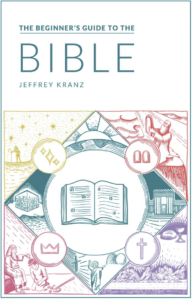
Explore the Bible with us!
We create research-based articles and handy infographics to help people understand the Bible.
Join our email list, and we’ll send you some of our best free resources—plus we’ll tell you whenever we make something new.
You have Successfully Subscribed!

- Bible Books
- Bible characters
- Bible facts
- Bible materials
- Bible topics
Recent Posts
- Interesting Facts about the Bible
- Logos Bible Software 10 review: Do you REALLY need it?
- Who Was Herod? Wait… There Were How Many Herods?!
- 16 Facts About King David
- Moses: The Old Testament’s Greatest Prophet

Privacy Overview

What happened on Paul's third missionary journey?

Outline of Paul's Missionary Journeys
ACT 13-28 STUDY - OUTLINE OF THE LIFE AND MINISTRIES OF THE APOSTLE PAUL.
- Birth and Early Life at Tarsus, Acts 21:39; Acts 22:3.
- Education at Jerusalem, Acts 22:3.
- Saul the Persecutor, Acts 8:1-3; Acts 22:4; Acts 26:11; Galatians 1:13,23; 1 Corinthians 15:9; Philippians 3:6; 1 Timothy 1:13.
- The Conversion, Acts 9:3-19; Acts 22:6-16; Acts 26:12-18. (35 A.D.)
- Arabia, Galatians 1:17.
- Damascus, Acts 9:19-25.
- Jerusalem, Acts 9:26-30.
- Tarsus, Galatians 1:21; Acts 9:30.
- Antioch the second center of Christianity, Acts 9:19-26.
- Famine in Jerusalem, Relief from Antioch, Acts 11:27-12:25.
- The First Missionary Journey, with Barnabas; Cyprus; Antioch of Pisidia; Iconium; Lystra; Derbe; the return, Acts 13:1-14:28.
- The Consultation at Jerusalem, Acts 15:1-35.
- Separation of Paul and Barnabas, Acts 15:36-40.
- The second Missionary Journey, with Silas; Galatia; Troas; Philippi; Thessalonica; Berea; Athens, Acts 15:41-17:34.
- Residence at Corinth, eighteen months, Acts 18:1-17.
- 1 Thessalonians and 2 Thessalonians written during this stay in Corinth (52-53 A.D.)
- Return to Antioch via Ephesus and Jerusalem, Acts 18:18-23.
- Return to Ephesus from Antioch, Acts 18:23-19:1.
- Galatians written (c. 55 A.D.)
- Residence in Ephesus three years, Acts 19:1-20:1.
- 1 Corinthians written (57 A.D.)
- Journey via Troas to Macedonia, Acts 20:1,2; 2 Corinthians 2:12,13.
- 2 Corinthians written (57 A.D.)
- Second visit to Corinth, three months, Acts 20:2,3.
- Romans written at Corinth (57 or 58 A.D.)
- Return to Jerusalem via Troas, Miletus, Tyre, Caesarea, Acts 20:3-21:16.
- Arrest in Jerusalem, Acts 21:17-23:35. (Pentecost, 58 A.D.)
- Imprisonment in Caesarea, Acts 24:1-26:32. (58-60 A.D.)
- The Voyage to Rome, Acts 27:1-28:16.
- Imprisoned in Rome, Acts 28:16-31. (61-63 A.D.)
- Epistles of the First Roman Imprisonment; Philippians, Colossians, Philemon, Ephesians (62, 63 A.D.)
- Probable release; Journey to Spain (conjectural-no written record of it left by either Paul or Luke).
- Ephesus, Macedonia, Crete, Troas.
- 1 Timothy and Titus written.
- Second Arrest, and return to Rome.
- 2 Timothy written.

Paul’s Four Missionary Journeys: The Complete Guide
God did many amazing things through the life and ministry of the apostle Paul. The gospel was spread to many people across the known world thanks to Paul’s efforts, despite the severe opposition and persecution Paul faced.
What were Paul’s missionary journeys? Paul took four missionary journeys. Paul’s first three missionary journeys are recorded in the book of Acts. The fourth is alluded to in Paul’s letters. On the first missionary journey Paul went through Cyrus, Pamphylia, and Galatia. On his second missionary journey he went through Galatia, Macedonia, and Achaia. Paul’s third journey took him through Galatia, Asia, Macedonia, Achaia, and ended in Jerusalem. After his third missionary journey Paul was imprisoned in Caesarea for two years and later transported to Rome where he was then placed under house arrest for another two years. His fourth missionary journey is not clear, but it may have included Spain, Crete, Asia, Achaia, and Macedonia.
By looking at Paul’s missionary journeys we can look and reflect on the beginning of the fulfillment of God’s command to “Go therefore and make disciples of all nations” (Matthew 28:19).
Timeline of Paul’s Missionary Journeys
- A.D. 37: Converted on the road to Damascus
- A.D. 37-40: Spends three years in Arabia
- A.D. 40: Brief visit to Jerusalem to meet with the apostle Peter
- A.D. 40-44: Preaches and ministers in Tarsus and surrounding regions
- A.D. 44 or 45: Relocates to Antioch in Syria
- A.D. 45 or 46: Travels with Barnabas to visit Jerusalem, brings a famine relief offering
- A.D. 46 or 47: First missionary journey with Barnabas, likely lasts 1-2 years
- A.D. 50: Attends the Jerusalem Council
- A.D. 51: Leaves on second missionary journey, trip lasts 2.5 to 3 years, including 18 months in Corinth
- A.D. 54: Leaves on third missionary journey, trip lasts more than 4 years, including 3 years in Ephesus
- A.D. 58: Arrested in Jerusalem, put on trial before the Roman governor Felix
- A.D. 58-60: Held in Caesarea for two years
- A.D. 60: Put back on trial by Festus the new Roman governor; eventually transported to Rome
- A.D. 61: Arrives in Rome
- A.D. 61-63: Placed under house arrest for two years
- A.D. 63: Released from house arrest, likely launches his fourth missionary journey
- A.D. 66 or 67: Imprisoned in Rome again
- A.D. 67 or 68: Martyred under Nero’s persecution
*Dates are approximate.
Paul’s Background
Before he was known as the apostle Paul, he was first known as Saul of Tarsus. He was a brilliant, pious, zealous, and well-educated Pharisee, from a wealthy and well-connected family. Saul was obviously intimately acquainted with the Hebrew Scriptures, but was also thoroughly acquainted with Greco-Roman history, language, and culture.
Saul became famous in Palestine because of his persecution of Christians. But things changed, dramatically. By God’s providence, Saul became a Christian after a supernatural encounter with Jesus on the road to Damascus (Acts 9).
After Saul’s conversion, he traveled to a few different places, over several years, including three years in Arabia (Gal. 1:17–18), a brief visit to Jerusalem (Gal. 1:18), and then several years of preaching in the regions of Syria and Cilicia (Gal. 1:21).
Partnership with Barnabas
After some heavy persecution of the Christians in Jerusalem, some believers ended up living in the city of Antioch. They preached the gospel there and a “great number” believed in Jesus (Acts 11:21). When the apostles in Jerusalem heard about this, they sent a man named Barnabas to Antioch to serve in the church there (Acts 11:22).
Barnabas was a prophet (Acts 13:1) and an apostle (Acts 14:14). Through his ministry a “great number of people were brought to the Lord” (Acts 11:24).
After being in Antioch a while, Barnabas traveled to Tarsus to find Saul. Barnabas recruited Saul to come teach and lead and serve in the church in Antioch in Syria (Acts 11:25-26). Saul relocated to Antioch sometime between 44 and 46 A.D. and served as one of the leaders of the church there.
Barnabas and Saul would become ministry traveling partners for the next few years, including at least one earlier trip to Jerusalem (Acts 11:27-30) in order to bring a famine relief offering to the Christians in Jerusalem (likely sometime between 45 and 46 A.D.).
First Missionary Journey
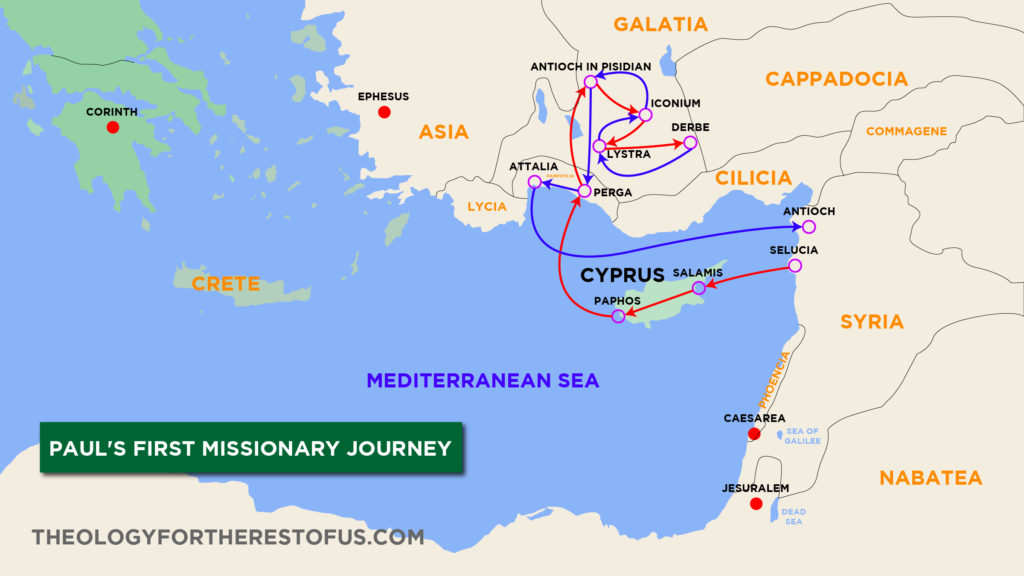
Barnabas and Saul sensed the call of the Holy Spirit to go out on their first missionary journey (Acts 13-14). Sometime around 46 A.D. (or 47 A.D.), Barnabas and Saul were set apart by the Holy Spirit and sent out on their first missionary journey by the church at Antioch.
Before Barnabas and Saul officially left on their first missionary journey, they recruited a young man named John Mark to go with them. John Mark was the son of a woman named Mary (mentioned in Acts 12:12). She owned the house where the Christians had been meeting and praying when Peter was miraculously delivered from jail by the angel.
It is likely that, as a young boy, John Mark had witnessed Jesus’ ministry first-hand. Sadly, however, during the missionary journey, John Mark would eventually abandon Barnabas and Saul. This would later lead to a significant dispute between Barnabas and Saul a few years in the future.
Barnabas and Saul sailed from Seleucia to the island of Cyprus, apx. 100 miles off the coast of Syria. They began by preaching to Jewish people in the synagogues of Salamis. The crew did ministry in several parts of the island until they got to Paphos (Acts 13:4-6).
During their ministry they faced significant opposition. One of their earliest opponents was a magician who was a Jewish false prophet. Saul performed a supernatural act that blinded this false prophet. These events led to the conversion of the Roman proconsul Sergius Paulus (Acts 13:6-12).
Saul Becomes Paul
After the events in Cyprus, the author of the book of Acts, Luke, begins to refer to Saul as Paul. Some Christians have asserted that Saul changed his name. However, it’s more likely that Saul and Paul were two different names for the same person all along; he was known by both names for many years.
After launching a Gentile-focused ministry, Paul would have been interacting with many Gentiles, and they would have likely preferred to refer to him by the Gentile name. It appears Luke sought to make this a point of emphasis. Scholar Greg Lanier says :
“When Saul Paul launches his Gentile-focused ministry among primarily Greek-speakers (beginning with Acts 13:9), it’s natural for Luke, the author of Acts, to begin referring exclusively to him by his Greek name. Nor is it surprising that he’s later referred to as ‘Paul’ in Jerusalem, since there were Greek speakers there too. Indeed, Luke could be making a thematic point by shifting from Saul to Paul around chapter 13, given the broader theme of Acts (e.g., 1:8). After all, the church’s nucleus is shifting from predominantly Jewish-centered Jerusalem to the Greek-centered ‘ends of the earth,’ such as Rome.”
Pamphylia and Galatia
Barnabas, Paul, and John Mark then traveled across the Mediterranean Sea to Perga in Pamphylia. This is where John Mark deserts Paul and Barnabas and heads back to Jerusalem (Acts 13:13).
From Perga, Paul and Barnabas then continued northward into the province of Galatia, coming to the city of Antioch in Pisidia (not to be confused with their home base city of Antioch in Syria).
Archaeologists have discovered an inscription containing the name ‘Sergius Paulus’ in the city of Antioch in Pisidia (he was the Roman proconsul that became a Christian back on the island of Cyprus). This is strong evidence that Sergius Paulus had family roots in Antioch in Pisidia. Some scholars have argued that he was the person that probably encouraged Barnabas and Paul to travel up to Antioch in Pisidia.
Once they arrived in Antioch in Pisidia, Paul went to the synagogue and preached about the good news of Jesus. Paul effectively preached in the synagogue for multiple weeks. This resulted in many people coming to faith in Jesus (Acts 13:14-44).
Unfortunately, Barnabas and Paul faced significant opposition there too. Part of the problem they faced was the jealousy of certain Jews. There were many Gentiles showing up to hear the gospel preached. Some Jews became jealous and started to contradict what Paul had to say. Since the Gentiles were more willing to hear what Paul had to say, he turned and preached to the Gentiles.
And when the Gentiles heard this, they began rejoicing and glorifying the word of the Lord, and as many as were appointed to eternal life believed. —Acts 13:48
The Gentiles’ response to the gospel was positive. The gospel continued to spread amongst Gentiles, but yet again the jealousy of the Jews became a significant issue. The Jews eventually drove Barnabas and Paul out of Antioch.
After leaving Antioch in Pisidia, they traveled eastward, further into the Galatian region, arriving at the city of Iconium. There they preached and did miracles in the name of Jesus.
Very similar to what had happened in Antioch, Paul went into the synagogue in Iconium to teach and the result was that many Jews and Greeks believed in Jesus, but the unbelieving Jews there stirred up trouble against Paul, dividing the city (Acts 14:1-4). Barnabas and Paul left the city when they heard about attempts to stone them (Acts 14:5).
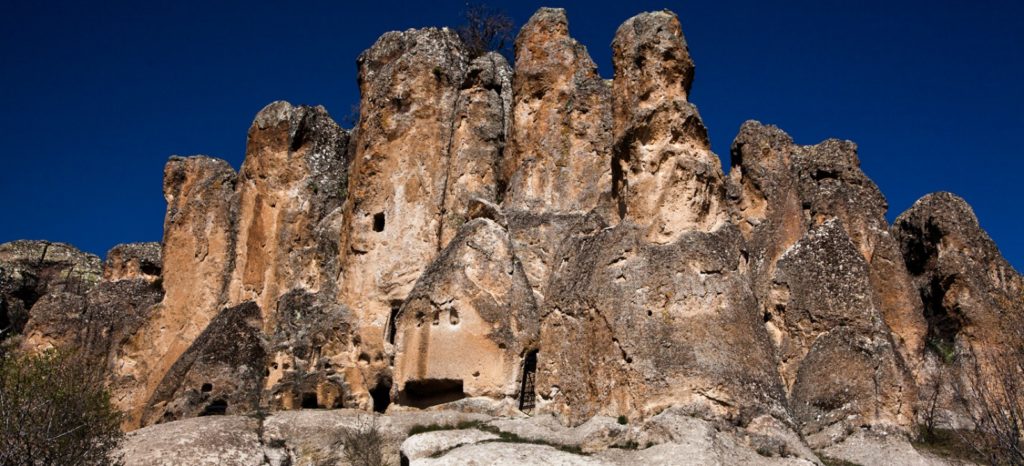
Lystra and Derbe
They then came to Lystra. There Paul performed a miracle causing a crippled man to walk again. When this occurred the people of the area assumed Barnabas and Paul were gods. The priest of Zeus brought animals to offer as sacrifices to Barnabas and Paul. When Barnabas and Paul realized what was happening, they tore their clothes in lament and told the people of the one true God (Acts 14:8-18).
The Jewish unbelievers from Antioch and Iconium had come to Lystra too, stirring up trouble. They convinced the people of Lystra to stone Paul and left him for dead outside the city. But Paul wasn’t dead. He got up walked back into the city (Acts 14:19-20).
The book of Acts doesn’t give us details about the events of that day when Paul walked back into the city, but I imagine the city’s residents were shocked. It was quite rare for anyone to survive stoning.
Barnabas and Paul then continued onto Derbe the next day. They preached and “won a large number of disciples” (Acts 14:21). Archeologists have discovered several inscriptions that show the Christian faith was a major presence in the city of Derbe after Barnabas and Paul’s visit.
Facing Tribulations for the Sake of Discipleship
Barnabas and Paul began their trek back home, but they decided that they’d first travel back through Galatia. When you look at a map, you see that it would have been much faster (and likely easier) to travel from Derbe directly to Antioch in Syria.
Derbe is less than 260 miles away from Antioch in Syria and less than 140 miles away from Paul’s original hometown of Tarsus. Barnabas and Paul could have traveled eastward through the region of Cilicia. Paul was very familiar with Cilicia and likely had friends throughout the region that could give them safe refuge along the way.
But Barnabas and Paul intentionally traveled more than 280 miles in the opposite direction of Antioch in Syria. Even though they had suffered great persecution in Galatia, they wanted to go back through the Galatian cities, before heading home, because they wanted to strengthen the disciples in those cities.
They returned to Lystra and to Iconium and to Antioch, strengthening the souls of the disciples, encouraging them to continue in the faith, and saying that through many tribulations we must enter the kingdom of God. —Acts 14:21-22
The journey through these cities for a second time gave them the opportunity to teach doctrine, establish elders in the churches, and pray with the believers.
After this, Barnabas and Paul then continued back down to Perga in Pamphylia. They preached in that region for a time. They eventually made their way over to the nearby port city of Attalia and sailed from there to Antioch in Syria (Acts 14:24-28).
Return to Antioch
Barnabas and Paul returned back home to Antioch in Syria stay there after the trip for “a long time” (Acts 14:28).
They had traveled more than 800 miles. Their first missionary journey had probably lasted between one and two years. When Barnabas and Paul arrived back in Antioch in Syria, they shared with everyone about the many people who had come to faith in Jesus and the churches that were established.
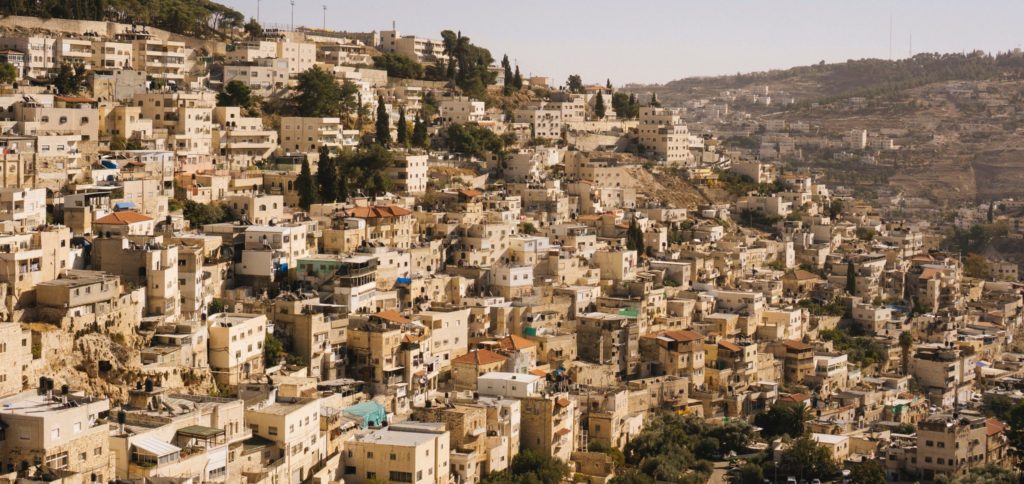
Jerusalem Council
After returning, Barnabas and Paul learned about a particular faction from Judea that had been confusing many Christians in the region by preaching a false gospel. This group had been preaching that, in order to become a Christian, the Gentiles must follow the Old Testament law, including circumcision (Acts 15:1).
Barnabas and Paul seem to have spent significant time disputing this false message and debated the Judean faction.
Eventually, this debate, about this false gospel, was appealed to the apostles in Jerusalem (Acts 15:2). This led to the Jerusalem Council (Acts 15:3-35), which likely took place sometime in 50 A.D. (some scholars date this event as early as 48 A.D. and some date it as late as 51 A.D.).
While traveling to Jerusalem for the council, Barnabas and Paul made stops along the way throughout Phoenicia and Samaria, encouraging believers wherever they went.
At the council, all the apostles concluded that the Gentiles do not need to follow the Jewish laws in order to become Christians. Barnabas and Paul (as well as several other men who had been at the council) headed back to Antioch to declare the good news. After the council they stayed in Antioch “some days” (Acts 15:36).
Paul and Barnabas Separate
Not long after the Jerusalem Council, Barnabas and Paul began planning their second missionary journey. They believed it was essential that they go to the Gentile world to proclaim the statements that came from the council.
Originally, Barnabas and Paul had intended to go out together again, however, they had a “sharp disagreement” (Acts 15:39). The source of this dispute was John Mark. Barnabas wanted John Mark to come along again, but Paul was against this idea since John Mark had deserted them on their previous missionary trip when they were in Pamphylia. Paul saw John Mark as a liability.
Due to this sharp disagreement, Barnabas and Paul would go on separate missionary journeys. Barnabas took John Mark and sailed to Cyprus. Paul took a young man named Silas and traveled by land (Acts 15:39-41).
Paul’s Second Missionary Journey
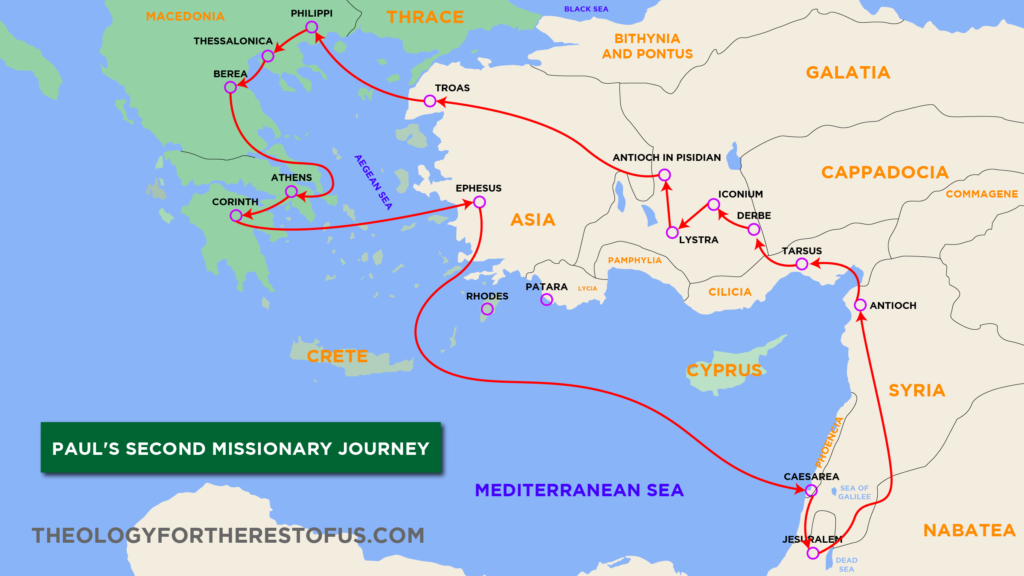
Paul likely started his second missionary journey (Acts 15-18) sometime late in 50 A.D. or early in 51 A.D. (but some scholars date both the council of Jerusalem and the launch of this missionary journey as early as 48 A.D.).
Paul and Silas started by traveling northwestward by land through the region of Cilicia. The Roman road that they would have used went directly through Paul’s hometown of Tarsus. I imagine this would have given Paul the sweet opportunity to reconnect with many old friends.
Paul and Silas made stops in the churches all throughout the region, along their way, “strengthening” believers (Acts 15:41).
Return through Galatia
Paul and Silas continued their travels westward into Galatia. They spent significant time in several Galatian cities including Derbe, Lystra, and Iconium, connecting with the churches that Paul had planted with Barnabas on this first missionary journey.
Paul and Silas taught the believers throughout Galatia what had been decided at the council in Jerusalem and the “churches were strengthened in the faith, and they increased in numbers daily” (Acts 16:5).
Paul Circumcises Timothy
Along the way, Paul and Silas meet a young man named Timothy from that region. He had a good reputation. Paul decided to let Timothy accompany them. However, Paul first circumcised Timothy (Acts 16:3).
It seems that Paul knew that having an uncircumcised man like Timothy with him could somehow impede the advance of the gospel wherever they preached.
Paul intended to continue to preach that circumcision was not necessary for salvation. But Paul knew that Timothy’s presence could potentially cause their opponents to claim that the only real reason that Paul was making these claims is because he had an uncircumcised friend (Timothy).
Paul’s Ministry Restricted
Paul and his crew traveled throughout the “region of Phrygia and Galatia” (Acts 16:6) looking for opportunities to preach the gospel in Asia (modern-day southwest Turkey), but they were restricted from doing so multiple times. They then traveled to the region of Mysia (modern-day northwest Turkey), attempting to eventually make their way northward toward Bithynia, but multiple times they were restricted or diverted by the Spirit (Acts 16:7).
It seemed that God’s providence was leading them somewhere other than what Paul had originally intended. They passed through Mysia again and eventually ended up in the city of Troas near the cost of the Aegean Sea.
Luke Joins the Team
In Troas, Luke joins their missionary crew. The book of Acts does not explicitly state this, but it’s implied. Throughout most of the book of Acts, Luke speaks in the third person. However, starting in Acts 16:10, Luke begins to speak in first person, as if he had joined the team by that point.
Luke would become one of Paul’s ministry protégés. He was a Greek physician, but he also functioned as an investigative journalist. He eventually writes both the Gospel of Luke and the book of Acts. Some scholars have also suggested that Luke wrote the book of Hebrews.
Macedonian Call and Travel to Philippi
While at Troas, Paul received a vision. This vision was of a Macedonian man asking for Paul to come and help them (Acts 16:9-10). After receiving this vision they sailed across the Aegean Sea to the island of Samothrace, and then onto Neapolis (modern-day northeastern Greece).
The missionary crew then traveled to Philippi where they stayed for “some days” (Acts 16:12). While there, they preached the gospel. One specific woman they met was Lydia. She became a believer along with the rest of her household and invited Paul and his companions to stay (Acts 16:13-15).
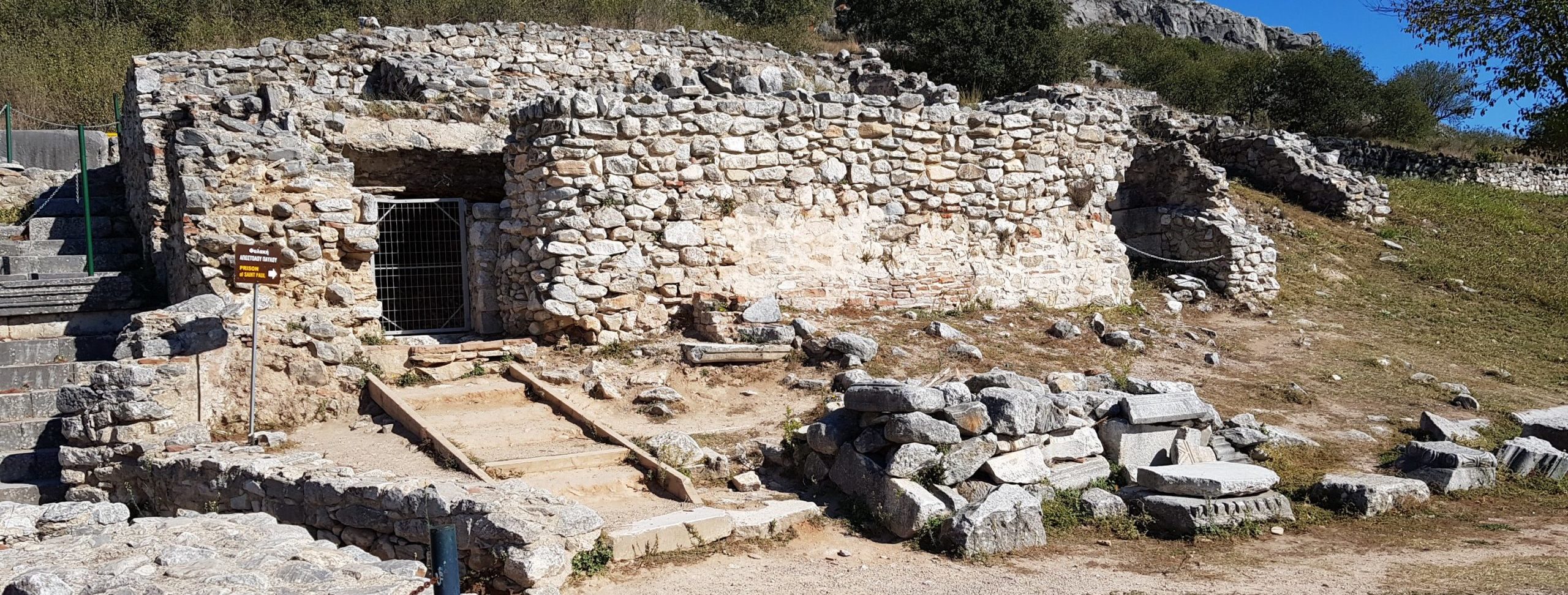
Paul and Silas Jailed in Philippi
While in Philippi, Paul and Silas met a slave girl who was demon possessed. Her owners made money off of her because the demon gave her the ability to function as a fortune-teller. For several days she followed Paul and Silas around, declaring that Paul and Silas were preachers of the one true God (Acts 16:16-18).
Paul cast the demon out of her. The girl’s owners realized that they wouldn’t make any more money from her, because she could no longer function as a fortune-teller. They were angry so they took Paul and Silas to the magistrates. Paul and Silas were beaten with rods and thrown into jail. Paul had previously been beaten and persecuted, but this marked the first time he was officially imprisoned (Acts 16:18-24).
While in prison, Paul and Silas prayed and sung hymns to the Lord. As they sang and prayed many of the other prisoners listened. Late in the night an earthquake occurred, this earthquake not only opened all the doors but broke their chains.
The jailer believed that all the prisoners had escaped and was about to kill himself (the Romans would’ve blamed the guard and likely would’ve executed him). But Paul and Silas stopped him and told him that no one had escaped. Then the jailer responded asking how to be saved.
And they said, “Believe in the Lord Jesus, and you will be saved, you and your household.” —Acts 16:31
God turned the persecution into an opportunity for gospel proclamation. Paul and Silas were not only able to witness to the jailer but all the prisoners listening to their hymns and prayers throughout the night. Paul went to the jailers home to preach and several people came to faith (Acts 16:25-34).
When the town magistrates learned that Paul and Silas were Roman citizens, the magistrates apologized for having unlawfully imprisoned them. This was a public vindication (of sorts) for Paul and Silas. Before leaving, Paul and Silas spent more time with Lydia and the other new converts in the region, encouraging them in the faith (Acts 16:35-40).
Thessalonica
Next, Paul and his crew passed through Amphipolis and Apponia and came to Thessalonica (Acts 17:1). As was his habit, Paul first went to the synagogue to preach to the Jews. He preached there on three consecutive Sabbath days. Many people believed, including many Gentiles.
Yet again, as Paul had seen before, many Jews became angry and jealous, and they caused an uproar. One of the brothers that had welcomed Paul was a man named Jason. The Jews dragged Jason before the city’s leaders. Jason was eventually released.
Paul and Silas left the city. It does seem that the church in Thessalonica continued to face persecution and trouble from their countrymen, but they flourished anyway. We read these words in Paul’s letter to the church:
For you, brothers, became imitators of the churches of God in Christ Jesus that are in Judea. For you suffered the same things from your own countrymen as they did from the Jews. —1 Thess. 2:14
Paul and his crew went to Berea. There, Paul yet again started in the Jewish synagogue, but this time he got a different response. Instead of jealousy and mobs, the Jews there examined the Scriptures to see if what Paul was saying was true. Many believed in Jesus.
Paul praised their willingness to study and pursue truth. Luke says the Jews of Berea were “more noble” than the Jews of Thessalonica (Acts 17:11).
Things seem to be going well. Many people became Christians. But the Jews from Thessalonica heard that Paul was teaching in Berea and they came to stir up the crowds and trouble. Paul was sent away by the brothers there, but Silas and Timothy stayed behind (Acts 17:13-14).
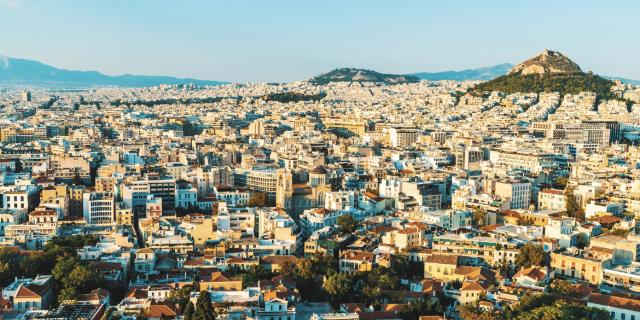

Traveling in Achaia
The apostle Paul was then escorted by some brothers more than 300 miles south, into the region of Achaia, reaching the city of Athens. When they arrived in Athens, the brothers headed back. Paul stayed in Athens, but told the brothers to tell Silas and Timothy that he wanted them to join him as soon as possible (Acts 17:15).
While Paul waited for Silas and Timothy, Paul’s “spirit was provoked within him” (Acts 17:16) because he saw an abundance of idols in the region.
Paul decided to make the best use of his time and talked with the Jews at the synagogue and preached to many Gentiles in the marketplace (Acts 17:17). Paul also talked with Epicurean and Stoic philosophers (Acts 17:18). They eventually brought Paul to the Areopagus, the court where men discussed philosophy, civics, and religion.
In the court of the Areopagus, Paul preached one of his most famous sermon (Acts 17:22-31). Paul’s sermons included quotes from famous Greek philosophers that they would have been familiar with. This gives us insights into Paul’s knowledge of their culture and insights into Paul’s missiology.
After hearing Paul’s sermon, there were some there who laughed at him, but there were also some who believed the gospel and joined Paul (Acts 17:32-34).
First Visit to Corinth
After leaving Athens, Paul traveled 53 miles southwest to Corinth. By this point in his second missionary journey, Paul had traveled more than 1,500 miles.
The apostle Paul probably arrived in Corinth apx. 8-12 months after the start of the second missionary journey, therefore, it’s likely that he got there sometime late in the year of 51 A.D. (or maybe sometime early in 52 A.D., depending on how we date his departure from Antioch in Syria). Paul stayed in Corinth for a year and a half (Acts 18:11), so Paul was likely in Corinth until the summer or fall of 53 A.D.
Silas and Timothy also rejoined Paul in Corinth.
While in Corinth, Paul met two Jews from Rome, Aquila and Priscilla. Like the apostle Paul, Aquila and Priscilla were also tentmakers. Paul stayed with them and worked while also going to the synagogues on the Sabbath to preach, seeking to convert both Jews and Greeks (Acts 18:1-4).
Paul faced some opposition from Jews in Corinth (Acts 18:5-9), but many people in the city believed anyway. Paul may have been considering leaving the city, but he stayed in Corinth after having received a vision from God that told him that “no one will attack or harm you” (Acts 18:10).
While in Corinth the apostle Paul wrote his letters to the Thessalonians, encouraging the new believers there to stand firm under the pressure and pain of persecution. He gives them instructions on how to live a godly lifestyle and gives doctrinal teaching about the future second coming of Christ.
Paul continued to preach the word of God faithfully for those 18 months. Many were saved and the church was established. But many Jews were upset.
The Jews of Corinth eventually tried to bring the apostle Paul before the Roman proconsul Gallio, who happened to be the older brother of the renowned dramatist and philosopher Seneca (the tutor of Emperor Nero). Gallio refused to even hear their case against Paul and sent them away (Acts 18:12-17).
Paul stayed in Corinth for “many days longer” (Acts 18:18) after being brought before Gallio. He then started his journey back home to Antioch in Syria, but planned to first make a stop in Ephesus. Priscilla and Aquila came with him.
Leaving from Cenchreae
Paul’s crew traveled to the nearby port city of Cenchreae, just eight miles from Corinth. We don’t know how long they stayed in Cenchreae, but they were there long enough for Paul to have his head shaved as part of a vow (Acts 18:18). It’s possible that this stop was very brief, but it’s also possible that they spent some time preaching and ministering there in the city.
There does seem to be some evidence that Paul spent some significant time in Cenchreae. But we cannot be certain. Also, we’re not sure if he spent time there during this second missionary journey or if that happened at a later time during his third missionary journey.
Brief Visit to Ephesus
When Paul arrived in Ephesus, he went into the synagogue to talk with the Jews about Jesus. His visit to Ephesus was brief. They requested that he stay in the city longer. He declined but said, “I will return to you if God wills” (Acts 18:21). Paul made plans to leave, but Priscilla and Aquila stayed in the city.
Paul traveled from Ephesus to Caesarea. Once he was there he visited with the believers in the region and preached the gospel in various towns and places. He briefly visited Jerusalem and then traveled back home to Antioch in Syria.
Paul’s second missionary journey lasted between two and a half years and three years, and likely ended back in Antioch sometime in the fall of 53 A.D. (or maybe early 54 A.D.).
Paul’s Third Missionary Journey
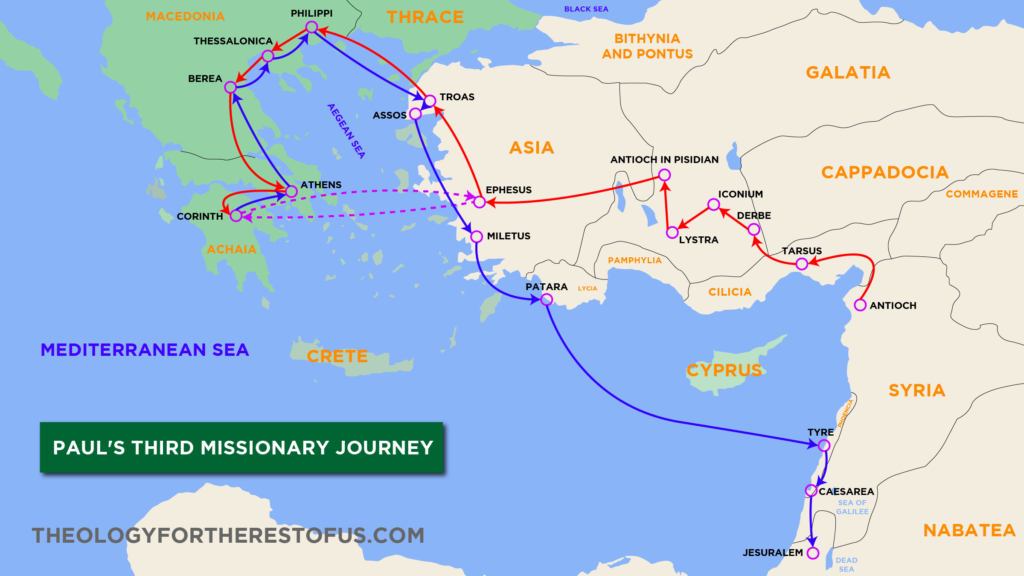
After getting back from his second missionary journey, the apostle Paul stayed Antioch for “some time” (Acts 18:23). Maybe just a few weeks or few months. He then launched his third missionary journey (Acts 18-21).
Paul likely left for his third missionary journey in the spring of 54 A.D. This third missionary journey was probably more than four years long and ended with Paul in Jerusalem in 58 A.D.
Galatia and Phrygia
Paul began his third missionary trip by visiting many of the same locations that he had visited on his first and second missionary journeys. We don’t know his exact route, but it’s likely he began by traveling through the region of Cilicia and through the city of Tarsus, on the way toward Galatia.
He spent several months traveling to the churches throughout the regions of Galatia and Phrygia, “strengthening all the disciples” (18:23). Paul passed through the “inland” route through Asia and traveled west to Ephesus (Acts 19:1).
Three Years in Ephesus
Paul spent three labor-intensive years in Ephesus (Acts 20:31). Paul was likely in Ephesus from the fall of 54 A.D. to the fall of 57 A.D.
Paul’s time in Ephesus was hard. He later says that he experienced many “afflictions” and he wasn’t confident that he would live through this season (2 Cor. 1:6-10). But God did many great things through Paul while he was in Ephesus.
For the first few months of Paul’s ministry in Ephesus, he spent time preaching in the synagogue. That was his focus. However there were many Jews stuck in unbelief, and they said evil things about Paul and the gospel message. So Paul decided to spend the last two and half years of his time in Ephesus preaching in the hall of Tyrannus, instead of the synagogue. He preached in the hall of Tyrannus daily and “all residents of Asia heard the word of the Lord” (Acts 19:10).
During Paul’s ministry, he performed many miracles in the name of Jesus, leading many to believe.
“God was doing extraordinary miracles by the hands of Paul… even handkerchiefs or aprons that had touched [Paul’s] skin were carried away to the sick, and their diseases left them and the evil spirits came out of them.” —Acts 19:11-12
God-Fearers Received the Holy Spirit
One of the most famous events from Paul’s time in Ephesus was when he corresponded with a group of disciples that had known about John’s baptism (referring to John the Baptist), but they did not know about Jesus (Acts 19:1-3). These types of believers were sometimes referred to as God-fearers.
These God-fearers had previously been taught by a great preacher named Apollos. He had taught them to revere the one true God, the God of Israel. But Apollos himself had not known about Jesus until after he had preached to this particular group of disciples. Apollos was later instructed by Paul’s friends, Priscilla and Aquila (Acts 18:24-28).
Paul taught this particular group about Jesus. They believed and received the Holy Spirit (Acts 19:4-7).
The Sons of Sceva
Another event that the book of Acts highlights, from Paul’s time in Ephesus, is about seven traveling Jewish exorcists, the sons of Sceva. These exorcists came across a demon-possessed man. They attempted to cast-out the demons (Acts 19:11-14). But one of the demons responded to them, “Jesus I know, and Paul I recognize, but who are you?” (Acts 19:15).
The demon-possessed man (under the control of the evil spirits) attacked the seven men and badly beat them (Acts 19:16). This caused many people in the region to respect Paul and his ministry. Many of the magicians in the area repented and burned their magic books (Acts 19:17-19) and “the word of the Lord continued to increase in the region” (Acts 19:20).
Demetrius, Riots, and Leaving Ephesus
Paul was planning to leave Ephesus. However, before he left Ephesus, a silversmith named Demetrius caused trouble. Demetrius made and sold idols. Paul preached against idolatry, so many people stopped buying Demetrius’ idols. This cost him money. Demetrius clearly was not happy.
There were other business owners that were also hurt financially because of Paul’s preaching. Many people had stopped buying their idols as they responded to the gospel. When these merchants got together, they started a massive riot in the city.
Paul wanted to go into the crowd to calm them down, but the disciples would not let him because they knew that Paul could get killed. Some of the Christians went into crowd and calmed the riot. Shortly after these riots, Paul set sail for Macedonia (Acts 19:21-20:1).

The “Painful” Visit
Paul had made plans to travel through Macedonia and then southward into Achaia (1 Cor. 16), which would likely include a visit to the church in Corinth.
At some point, Paul received some correspondence telling him that there were massive problems in the church of Corinth. How did Paul respond when he received this news? There are two main views from scholars.
View #1: Paul immediately changed plans and left from Ephesus to Corinth.
Some scholars argue that as soon as Paul received word that there were big problems in Corinth, Paul changed his plans and decided to visit the Corinthians immediately, skipping his original plans to travel through Macedonia.
Paul probably thought that once he was there in Corinth, that he’d be able to resolve the conflicts. But it seems that the exact opposite happened. Paul would later describe this visit as “painful” (2 Cor. 2:1). During this “painful” visit Paul was deeply hurt by someone in the church (2 Cor. 2:5).
The scholars that embrace View #1 say that Paul then left Corinth after this “painful visit” and headed back to Ephesus for a brief period of time.
It then appears that Paul was contemplating returning to Corinth, yet again, before heading over to Macedonia, but Paul ultimately decided against this additional visit, in order to “spare” the Corinthians (2 Cor. 1:23). Paul defends this decision in 2 Corinthians (vv. 1:12-2:2).
Paul then left from Ephesus to Macedonia (Acts 20:1). However, Paul would eventually make a third visit back to Corinth a few months later toward the end of this journey.
These scholars typically piece it all together like this:
- Paul (while in Ephesus) receives news of trouble in the church of Corinth and changes his plans
- Travels from Ephesus to Corinth for a second visit (known as the “painful” visit)
- Travels from Corinth back to Ephesus
- Contemplates another visit to Corinth, but decides against it
- Experiences the Demetrius-led riots in Ephesus
- Travels onto to Macedonia
- Goes from Macedonia down into Greece
- Eventually makes it back to Corinth (third overall visit)
Scholars that hold to View #1 assert that Paul ultimately made three total visits to Corinth; his first visit (the 18 months he spent there during his second missionary journey), the “painful” visit from Ephesus, and then a third visit toward the end of this third missionary journey.
View #2: Paul did not change his plans, but visited Corinth later.
Scholars that hold to View #2 say that Paul likely received some communication from Corinth (that there were indeed big problems in the church), but these scholars conclude that receiving this communication did not cause Paul to visit Corinth immediately.
The scholars that embrace View #2 argue that Paul did consider changing his plans, which would have consisted of a visit to Corinth before going through Macedonia, but these scholars argue that ultimately Paul decided against going to Corinth immediately, so he stuck to his plans to travel through Macedonia. They interpret Paul’s words in 2 Corinthians (vv. 1:12-2:2) as Paul giving a defense as to why he did not visit them.
These scholars say that eventually Paul did visit Corinth, a few months later, toward the end of his third missionary journey. Scholars that embrace View #2 often say that the word “painful” (2 Cor. 2:1) was not a description of an actual visit that ever happened, but that it was a description of the type of visit that would have ensued if Paul had indeed visited them. He knew that if he did visit, it would have been painful, so he sought to “spare” them (2 Cor. 1:23).
- Paul (while in Ephesus) receives news of trouble in the church of Corinth
- Contemplates an immediate visit to Corinth, but ultimately decides against it
- Goes from Ephesus to Macedonia
- Eventually travels to Corinth for his second visit
Scholars that hold to View #2 assert that Paul ultimately made two total visits to Corinth; his first visit (the 18 months he spent there during his second missionary journey) and then his visit to Corinth toward the end of this third missionary journey.
Leaving For Macedonia and the Sorrowful Letter
Paul leaves Ephesus and heads toward Macedonia. In the book of Acts, Luke gives us no details. He only says that Paul “departed for Macedonia” (Acts 20:1). However, by examining Paul’s letters, we get more insight into these travels.
It appears that, at some point during this journey, Paul had sent Titus to Corinth with a letter (this is sometimes referred to as the “sorrowful letter”). Paul later describes this “sorrowful” letter as having been written with “much affliction and anguish of heart and with many tears” (2 Cor. 2:4).
Some scholars contend that this “sorrowful letter” is the epistle that appears in the New Testament, that we know today as 1 Corinthians. Other scholars argue that the “sorrowful letter” is a separate correspondence that has been lost to history.
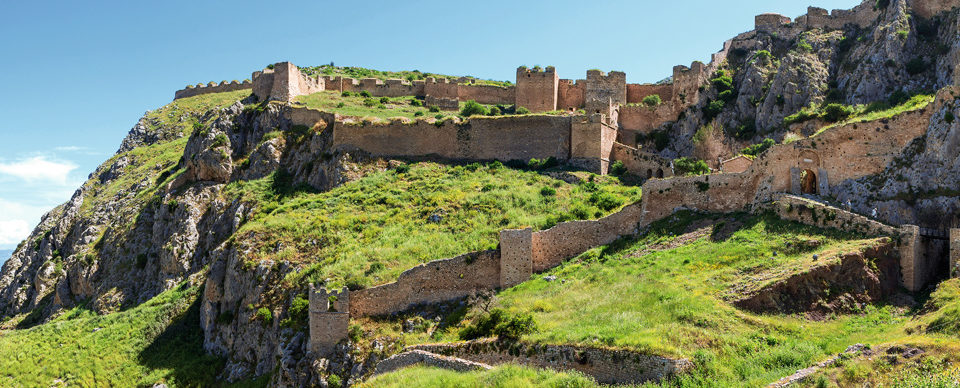
Ministry in Troas and Macedonia
On the way to Macedonia, Paul stopped in Troas to preach there and to await Titus’ return from Corinth. While waiting in Troas, Paul had great ministry opportunity. He called it an “open door” (2 Cor. 2:12).
However, when Titus’ return from Corinth appeared to be delayed, Paul was concerned for Titus’ safety. Paul decided to leave Troas and traveled to Macedonia to find Titus (2 Cor. 2:13).
Paul traveled throughout Macedonia, visiting the churches and friends in the region, and encouraging the believers in those churches (Acts 20:2).
Finally, while in Macedonia, Paul was reunited with Titus. Titus reported that many people in the church of Corinth had repented after hearing Paul’s letter (2 Cor. 2:5-11; 7:5-16). Paul was filled with joy.
However, Titus also reported that Paul’s opponents still wielded some influence over a small rebellious faction within the church questioning Paul’s authority and credibility. Paul responded to this faction by writing another letter (most likely from Philippi). This letter is in our New Testament, known today as 2 Corinthians.
Three Months in Greece
After these travels through Macedonia, the apostle Paul eventually traveled southward and finally arrived in Greece (i.e., Achaia). He stayed in the region for three months (Acts 20:2-3), including a lengthy stay in Corinth. This stay likely took place in late 57 A.D. or early 58 A.D.
While in Corinth, Paul wrote his theological masterpiece, the letter to the Romans.
As previously discussed in this article, some scholars believe that this was Paul’s second visit while others argue that this was his third visit.
Cenchreae and Phoebe
It’s also possible that during these three months in Achaia, Paul spent time in the nearby city of Cenchreae. In the book of Romans, Paul mentions Phoebe, a deaconess in the church of Cenchreae (Rom. 16:1).
Phoebe was the person that delivered Paul’s letter to the Romans, and Paul asked them to welcome her, praising her for being a “patron of many” (Rom. 16:2). It’s highly unlikely that Paul would have asked her to make this important delivery for him unless he knew her well and trusted her, pointing to the likelihood that Paul had spent time in Cenchreae before writing that letter.
As previously mentioned in this article, it’s also possible that Paul had spent some time in Cenchrea during his second missionary journey as well as this third missionary journey.
One More Lap Through Macedonia
After his time in Achaia, Paul had originally intended to sail directly to Jerusalem. Those plans were changed, however, when it was discovered that some of Paul’s opponents had been plotted against him. Paul decided to take another lap through Macedonia instead (Acts 20:3).
Paul had many companions with him, from various churches, which gave him protection while he traveled through Macedonia (Acts 20:4-5).
Throughout the spring of 58 A.D., Paul traveled through the Macedonian region, visiting towns such as Berea and Thessalonica, and eventually ending up in Philippi (again) during the “days of unleavened bread” (Acts 20:6).
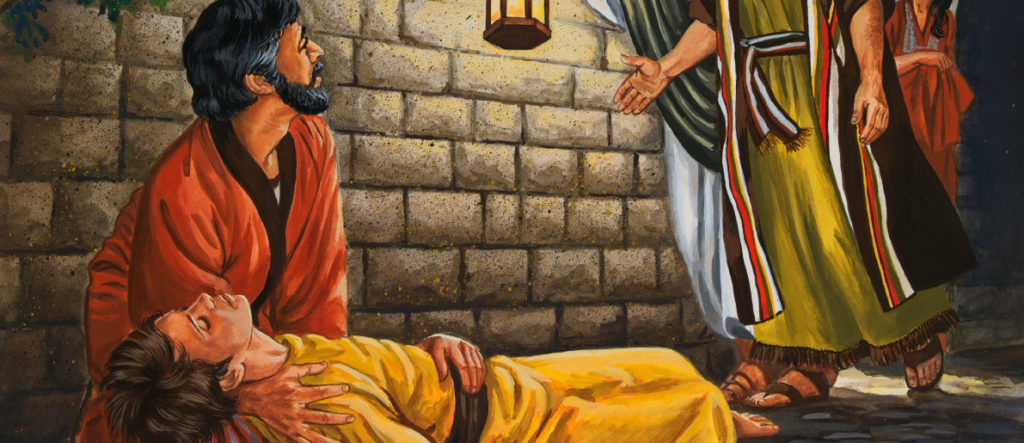
Eutychus Raises from the Dead at Troas
Paul and his companions then traveled to Troas (Acts 20:5). He ministered there again for a week. It was in Troas that a young man, Eutychus, was listening to one of Paul’s sermons and fell three stories out a window. When they found him he was dead on the ground, but Paul supernaturally restored life to this man (Acts 20:6-12).
After Troas, Paul’s companions went by ship to Assos, but Paul went by foot. Luke doesn’t tell us precisely why Paul did this. But what we do know is that distance from Troas to Assos was more than 30 miles through dangerous and mountainous terrain.
After meeting with his companions in Assos, they began their trek to Jerusalem. They made briefs stops in Chios and Samos, before arriving in Miletus (Acts 20:15).
Goodbye to the Ephesian Elders
It would make sense that Paul would have wanted to stop in Ephesus before heading to Jerusalem. considering the dear friends he had there, but he intentionally passed Ephesus because he wanted to be in Jerusalem by Pentecost, and he knew that traveling through Ephesus, and staying in Asia, would take much more time than he desired. In addition, he knew visiting Ephesus again could cause an uproar (Acts 20:13-16).
However, Paul did want to see his Ephesian friends and ministry partners, so when he arrived in Miletus, Paul called the elders from Ephesus to meet him there (Acts 20:17). In Miletus he encouraged the elders and commended them, letting them know that he would not be seeing them again since he knew that imprisonment and maybe death waited for him in Jerusalem. This was, no doubt, an emotional moment for Paul and his friends.
Paul had spent several years laboring with these men in ministry, and now he was saying goodbye for, what appeared to be, the last time. They wept and prayed together (Acts 20:17-38).
Sailing for Syria
From there, the apostle Paul and his companions then sailed towards Syria. They made brief stops in Cos, Rhodes, and Patara, before finally coming to Syria, landing at Tyre (Acts 21:1-3). Paul and his companions spent seven days with the disciples in Tyre. Through “the Spirit” they told Paul not to go onto Jerusalem, but Paul sensed that Jerusalem was the right place to go (Acts 21:4).
Then Paul and his companions went to Ptolemais (Acts 21:7), spending one day with the believers there, before heading onto Caesarea. There they were greeted by the believers there and they stayed with Philip the evangelist (Acts 21:8). While they were there, a prophet named Agabus came down from Judea and told Paul of the coming affliction he would face in Jerusalem (Acts 21:10-12).
Despite many people again urging Paul not to go to Jerusalem, Paul told them he knew what was instore and that he was ready to die.
Then Paul answered, ‘What are you doing, weeping and breaking my heart? For I am ready not only to be imprisoned but even to die in Jerusalem for the name of the Lord Jesus.’ —Acts 21:13
Paul and his companions then traveled to Jerusalem and was greeted by his brothers in Christ who lived there. He told the church there all God had been doing among the Gentiles (Acts 21:14-16). Once there, Paul visited with James and all the elders (Acts 21:17-18). He told them about all that God had done throughout the Gentiles.
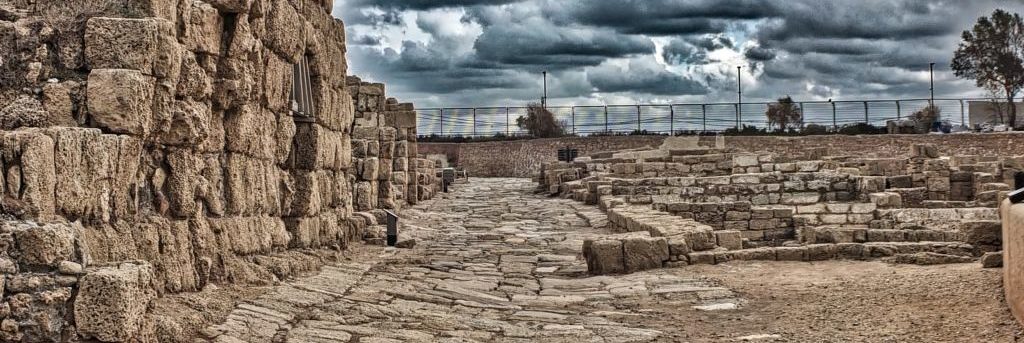
Arrested in Caesarea
While in Jerusalem, Paul went to the temple to worship and pray. While he was there, some Jews from Asia Minor stirred up trouble for Paul. They accused him of abandoning the one true God of Israel, of maligning the law of Moses, and of encouraging people to disobey the Jewish laws. Paul (obviously) denied this charge. This confrontation caused a riot in the temple. Paul was dragged out of the temple by a mob. The Romans then intervened and took Paul into custody (Acts 21:27-36).
Paul then addressed the crowd. He made it clear that he loved the law of God and that he had previously been a persecutor of Christians. But that he had become a preacher of the gospel after meeting Jesus on the road to Damascus. This caused another riot to erupt. The Romans then took Paul in their barracks. The Romans were going to flog him but Paul appeals to his own Roman citizenship (Acts 21:37-22:29).
On Trial Before Felix
Paul is taken to the Roman barracks in Caesarea. During this time the Roman governor over the region, Felix, brought Paul to trial. Ananias, the high priest, came from Jerusalem to bring charges against Paul. Felix gave Paul the opportunity to speak before the crowd. Paul shares his story and preaches truth. Felix was afraid of Paul’s message, so he doesn’t seemingly know what to do with Paul (Acts 23:23-35; 24:1-27).
Paul was imprisoned in Caesarea by the Romans for two years, but was given “some freedom” and his friends are allowed to visit him “to take care of his needs” (Acts 24:23).
On Trial Before Festus and Agrippa
When Festus became the governor of the region in 60 A.D. (or maybe earlier in 59 A.D.), he brought Paul back to trial. Some Jews came from Jerusalem again to bring charges against Paul, but they could not prove any of those charges (Acts 25:1-12).
King Herod Agrippa II visited with Festus. Festus asked him to hear Paul’s case. When Paul is called to defend himself, he gives one of his most famous defenses of the gospel and even encourages Agrippa to believe in Jesus (Acts 26:1-29). Agrippa famously responds, “Do you think that in such a short time you can persuade me to be a Christian?” (Acts 26:28). Paul says that he wants everyone to believe.
Festus calls Paul crazy (Acts 26:24), but both he and Agrippa agree that Paul had not done anything that might “deserve death or imprisonment” (Acts 26:31). Paul could have simply “been set free if he had not appealed to Caesar” (Acts 26:32). Paul had appealed to Caesar under his rights as a Roman citizen. This set into the motion the plans for Paul to be transported from Palestine to Rome to face trial in Caesar’s court.
Journey to Rome
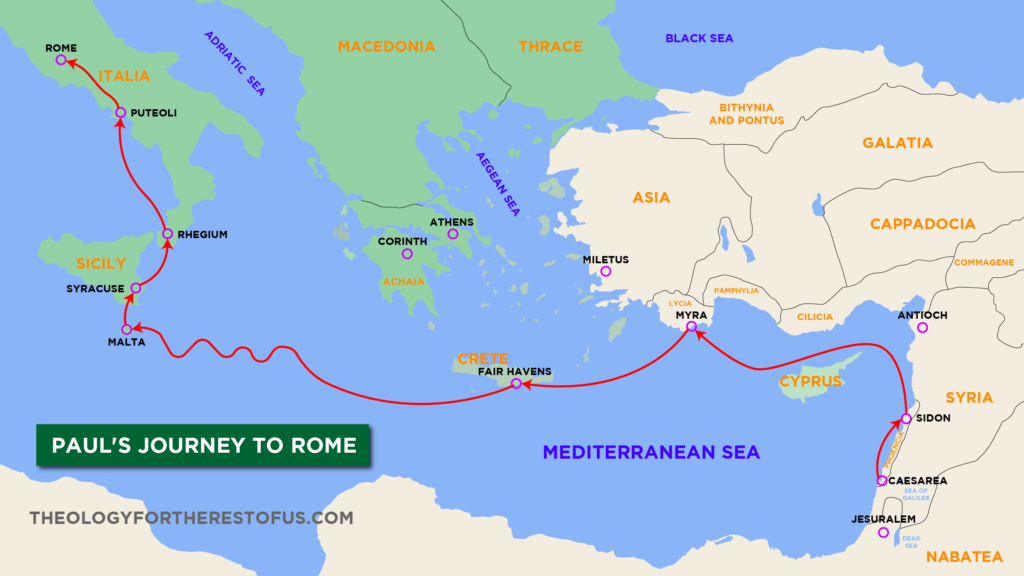
After his appeal to Rome, the apostle Paul is transported from Caesarea to Rome by ship under Roman guard (Acts 27:1-28:10). Some Bible scholars allude to this journey as Paul’s fourth missionary journey, but I don’t believe that’s the best or most accurate description for this trip.
Paul’s trip to Rome was tumultuous, filled with difficulties, including a shipwreck that caused him to be deserted on the island of Malta for three months. He also consistently faced belligerent resistance from people that opposed the gospel.
Paul and his companions eventually made it to Rome, sometime around 61 A.D. (or maybe somewhat earlier). When Paul arrived in Rome, he was placed under house arrest for two years.
Paul lived in a rented house where he served his house arrest. There he is able to visit with friends and preach the gospel to those who visit. During this time he also writes several letters that are now in the New Testament, including Philippians, Ephesians, Colossians, and Philemon.
The book of Acts ends there, with Paul under house arrest in Rome (Acts 28:11-31).
Paul’s Fourth Missionary Journey
The fourth missionary journey is not outlined in the narratives of Scripture. And there are some scholars that question whether such a journey ever really happened (we’ll cover that a bit more later in this article).
We don’t have a clear picture of what happened next in Paul’s life, after he was released from house arrest. But by carefully examining Paul’s epistles, I’m confident we can piece-it-together.
The early church father and historian Eusebius (writing in the 4th century) recorded that the most prominent church tradition had been that Paul was released from Roman house arrest and then re-arrested several years. According to this tradition, Paul’s second arrest eventually led to his martyrdom under the direction of Emperor Nero (see H.E. 2.22.6 ).
Also, Paul’s later letters (1 & 2 Timothy and Titus), commonly referred to as the Pastoral Epistles, are clearly written after the events of the book of Acts. In those letters Paul makes comments about his travels and plans. Paul is likely released from house arrest sometime around 63 A.D.
During his house arrest in Rome, Paul was clearly making plans to travel eastward. He asks Philemon to prepare a guest room for him (Philemon 22) and tells the Philippians that he intends to visit them (Phil. 2:24). Paul doesn’t strike me as the type of guy that would make plans in vain. Paul anticipated his release from house arrest.
These plans to go east make perfect sense. Paul’s habit was to go back and encourage the churches that he had previously established. That’s what he’d done on previous journeys.
Then, in 2 Timothy, written much later in life, during Paul’s second imprisonment, Paul mentions and alludes to people and moments that are connected to his post-Roman arrest ministry travels through Asia. He’s sort of looking back on past events and correspondences. Paul mentions:
- Having a significant dispute with some believers in Asia, including Phygelus and Hermogenes (2 Tim. 1:15)
- Receiving help from Onesiphorus (2 Tim. 1:18)
- Having been with Carpus at Troas (2 Tim 4:13-14)
- Being confronted by Alexander the coppersmith (2 Tim. 4:14)
- Needing to leave Trophimus in Miletus because he was ill (2 Tim 4:20)
All of these events happened after Paul’s release from Roman house arrest.
Paul says in 2 Timothy 4:20 that “Erastus remained at Corinth.” This is a clear statement that Paul had been in Corinth; he knew Erastus was there because he had first-hand knowledge, having recently visited the city.
In Titus 3:12, Paul invites Titus to join Paul in Nicopolis. Paul tells Titus that he plans on spending the winter in Nicopolis, a city in Achaia. Clearly, when Paul writes the letter to Titus he is already in Achaia or somewhere very close, hoping for Titus to meet him there.
In Paul’s letter to Titus, he alludes to having been in Crete and having left Titus in charge to help those churches flourish.
A few scholars have argued that Paul did ministry in Crete when he was shipwrecked there. Paul had been briefly shipwrecked in Crete while traveling from Caesarea to Rome, before his Roman house arrest (Acts 27).
However, Paul and the men from the shipwreck were in Crete just a short while. As we examine the events of the shipwreck, as they are described in the book of Acts, we see that Paul would not likely have had the opportunity to establish churches in the region during such a short period. Also, they didn’t travel throughout the island at all.
What seems much more likely is that Paul eventually made it back to the island of Crete, spend time preaching, establishing churches throughout the region, and that upon his departure Paul left Titus there to “complete [their] work there and appoint elders in each town” (Titus 1:5).
At the beginning of 1 Timothy Paul says “when I was going to Macedonia” (1 Timothy 1:3). When we examine this letter, we get the sense that he’s referring to events in the not-too-distant past. Seems likely Paul is referring to the moment when he had traveling to Macedonia after being released from Roman house arrest. After his time spent in Macedonia, he may have headed back to the church in Ephesus, which he asserted was his plan (1 Timothy).
Doubts about the Fourth Journey
There are clearly some comments in Paul’s letters that do not easily square with the events of the book of Acts, which means that those comments in his letters point to some missionary work that happened after Paul’s Roman house arrest.
However, a few scholars have argued that there’s significant (enough) overlap in the locations, types of events, and even the people mentioned during Paul’s first three journeys, therefore it’s hard to say for sure—they claim it’s possible that much of those things that do not seem to square with the events of the book of Acts can still potentially be things that happened on one of his first three missionary journeys.
Also, some scholars have sought to remind us that the apostle Paul spent long periods of time in some locations (like 18 months in Corinth and 3 years in Ephesus), and they’ve asserted it’s possible that many unrecorded things may have happened during those long stays, implying that those longer stays in those locations could account for some of the comments in Paul’s epistles.
These scholars claim there’s so much that we do not know about those time periods, that it’s entirely possible all of the events alluded to by Paul, in his own letters, took place during his first three journeys.
I happen to be confident that Paul did indeed take a fourth missionary journey, after his release from his Roman house arrest. I think that’s the best interpretation of the data we have. However, I also realize that there are some good New Testament scholars that don’t find the evidence as compelling as I do.

Potential Travel to Spain
Did Paul ever make it to Spain? We know from Scripture that the apostle Paul had a desire to preach in Spain (Rom. 15:22-29). After being released from Roman house arrest, he could have easily sailed westward.
Clement of Rome (writing in 95 A.D.) says that Paul had traveled and preached in “the farthest limits of the West” (1 Clement 5:5-7). This sort of language could have described a location west of Italy, such as Gaul or Britannia, but most scholars seem to think this describes Spain. However, it is also possible that Clement was speaking more broadly (or generically), referring to Paul traveling far westward from his home region, going from Palestine through much of the heart of the Roman Empire and eventually all the way to Rome. This latter interpretation seems odd to me.
The Muratorian fragment (written in apx. 170 A.D.), seems to affirm Paul’s missionary journey to Spain too, but some scholars question this; just because someone in the mid-to-late second century believed it doesn’t necessarily equate to strong evidence. However, this shows that church tradition was handing this down through the generations.
Paul’s missionary trip to Spain is also mentioned by Cyril of Jerusalem (313-386) and John Chrysostom (347-407).
There may not seem to be many significant (quality) pieces of evidence that corroborate the idea that Paul made it all the way to Spain, and there are not any comments in Paul’s later letters that point to him ever making it to Spain either. However, these extrabiblical evidences seem compelling. It’s possible that a trip to Spain may have been the first leg of Paul’s fourth missionary journey.
Paul Beheaded by Nero
In his second letter to Timothy, Paul mentions his “first defense” and says he was “delivered from the lion’s mouth” (2 Tim. 4:16-17). Most biblical scholars believe this is a reference to the first time he was in Caesar’s court, defending himself, eventually leading to his Roman house arrest (Acts 28).
Paul was released from his first Roman arrest, but there wouldn’t be a second release. Paul eventually ended up back in Rome. The second time, it wasn’t house arrest. It was a real Roman jail. This was most likely part of Nero’s persecution of Christians in the mid 60s. This was one of the most brutal times of persecution in Christian history.
When much of the city of Rome burndown in 64 A.D., Emperor Nero blamed the Christians. The emperor later requested that the apostle Paul be arrested and chained. It appears that Paul was arrested somewhat abruptly and unexpectedly, evidenced by the fact that he was not able to secure his cloak and his Old Testament parchments; Paul later requested that these be brought to him (2 Tim. 4).
Paul likely penned 2 Timothy during this second Roman imprisonment. Paul was beheaded shortly after he wrote 2 Timothy. Some scholars have concluded that Paul was killed as early as 64 A.D., but it is more likely that he was executed sometime between 67 A.D. and 68 A.D.
The legacy of the apostle Paul is second to none in Christian history. He is the greatest missionary evangelist the world has ever seen. Paul was a man on mission, focused on spreading the gospel and planting churches.
Paul was a man so impacted by Jesus, so compelled by God’s love, so humbled that the Messiah would choose him to be an ambassador, that he was willing to endure much pain and hardship to see others come to faith in Jesus Christ.
Featured illustration of Paul in prison courtesy of britannica.com. Images of the jails in Philippi and Caesarea courtesy of missionbibleclass.org. Illustration of Eutychus’ death courtesy of gfbtkingdomkids.com.
Recommended Resources:
“Handbook on Acts and Paul’s Letters” (by Thomas R. Schreiner)
“Paul: A Biography” (by N.T. Wright)
“Acts: An Expositional Commentary” (by R.C. Sproul)
“Dictionary of Paul and His Letters” (more than 100 contributors, edited by Gerald Hawthorne, Ralph Martin, and Daniel Reid)

Kenneth E. Ortiz (Th.M.) is Lead Pastor of Horizon City Church . He has 15+ years of vocational ministry experience. Kenneth previously served as a professor at Bethlehem College and adjunct faculty at Spurgeon College . Kenneth lives in Minneola, FL with his wife Malaina, they have two kids.
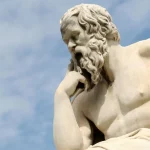
How to go to Heaven
How to get right with god.

What were the different missionary journeys of Paul?
For further study, related articles, subscribe to the, question of the week.
Get our Question of the Week delivered right to your inbox!


Bible Pearls
Did you know that....
The Holy Spirit is one of the most misinterpreted concepts of the Bible. Different denominations of Christianity have different definitions for it.
But, who or what is the Holy Spirit? And is it male or female in the Bible? Is it the third God of the Trinity? Today you can finally learn the truth about this apparently confusing issue.
If you would like to know who or what the Holy Spirit truly is in the Bible and solve this problem, check out our article on this topic in our Bible Articles section, you will find it very interesting.

SIGN UP FOR OUR NEWSLETTER
Related articles you might like.

Paul's Missionary Journeys Map

Map of the 7 Churches of Revelation
If You Found This Helpful, Please Share. Thanks!

ConformingToJesus Ministry - Copyright © 2014-2024. All Rights Reserved

Chronology of Paul’s Ministry
Paul’s 1st and 2nd missionary journeys, paul’s 3rd missionary journey, paul’s trip to rome, spread of christianity during 1st and 2nd centuries, chronology of jesus’ life and ministry, chronology of the old testament kings, chronology of latter prophets and intertestamental period, chronology of the prophets, paul’s first and second missionary journeys, paul’s third missionary journey, genesis genealogical charts, chronology of the flood, the events of holy week, order of resurrection events, chronology of the old testament books, chronology of the new testament books, composite of the four gospels, timeline of salvation history.
This site uses cookies. By continuing to browse the site, you are agreeing to our use of cookies. Privacy Policy
Cookie and Privacy Settings
We may request cookies to be set on your device. We use cookies to let us know when you visit our websites, how you interact with us, to enrich your user experience, and to customize your relationship with our website.
Click on the different category headings to find out more. You can also change some of your preferences. Note that blocking some types of cookies may impact your experience on our websites and the services we are able to offer.
These cookies are strictly necessary to provide you with services available through our website and to use some of its features.
Because these cookies are strictly necessary to deliver the website, refusing them will have impact how our site functions. You always can block or delete cookies by changing your browser settings and force blocking all cookies on this website. But this will always prompt you to accept/refuse cookies when revisiting our site.
We fully respect if you want to refuse cookies but to avoid asking you again and again kindly allow us to store a cookie for that. You are free to opt out any time or opt in for other cookies to get a better experience. If you refuse cookies we will remove all set cookies in our domain.
We provide you with a list of stored cookies on your computer in our domain so you can check what we stored. Due to security reasons we are not able to show or modify cookies from other domains. You can check these in your browser security settings.
These cookies collect information that is used either in aggregate form to help us understand how our website is being used or how effective our marketing campaigns are, or to help us customize our website and application for you in order to enhance your experience.
If you do not want that we track your visit to our site you can disable tracking in your browser here:
We also use different external services like Google Webfonts, Google Maps, and external Video providers. Since these providers may collect personal data like your IP address we allow you to block them here. Please be aware that this might heavily reduce the functionality and appearance of our site. Changes will take effect once you reload the page.
Google Webfont Settings:
Google Map Settings:
Google reCaptcha Settings:
Vimeo and Youtube video embeds:
The following cookies are also needed - You can choose if you want to allow them:
You can read about our cookies and privacy settings in detail on our Privacy Policy Page.
Search a pre-defined list
The Whole Bible The Old Testament The New Testament ────────────── Pentateuch Historical Books Poetical Books Wisdom Literature Prophets Major Prophets Minor Prophets ────────────── The Gospels Luke-Acts Pauline Epistles General Epistles Johannine Writings ────────────── Genesis Exodus Leviticus Numbers Deuteronomy Joshua Judges Ruth 1 Samuel 2 Samuel 1 Kings 2 Kings 1 Chronicles 2 Chronicles Ezra Nehemiah Esther Job Psalms Proverbs Ecclesiastes Song of Songs Isaiah Jeremiah Lamentations Ezekiel Daniel Hosea Joel Amos Obadiah Jonah Micah Nahum Habakkuk Zephaniah Haggai Zechariah Malachi Matthew Mark Luke John Acts Romans 1 Corinthians 2 Corinthians Galatians Ephesians Philippians Colossians 1 Thessalonians 2 Thessalonians 1 Timothy 2 Timothy Titus Philemon Hebrews James 1 Peter 2 Peter 1 John 2 John 3 John Jude Revelation
OR Select a range of biblical books
Select a Beginning Point Genesis Exodus Leviticus Numbers Deuteronomy Joshua Judges Ruth 1 Samuel 2 Samuel 1 Kings 2 Kings 1 Chronicles 2 Chronicles Ezra Nehemiah Esther Job Psalms Proverbs Ecclesiastes Song of Songs Isaiah Jeremiah Lamentations Ezekiel Daniel Hosea Joel Amos Obadiah Jonah Micah Nahum Habakkuk Zephaniah Haggai Zechariah Malachi Matthew Mark Luke John Acts Romans 1 Corinthians 2 Corinthians Galatians Ephesians Philippians Colossians 1 Thessalonians 2 Thessalonians 1 Timothy 2 Timothy Titus Philemon Hebrews James 1 Peter 2 Peter 1 John 2 John 3 John Jude Revelation
Select an Ending Point Genesis Exodus Leviticus Numbers Deuteronomy Joshua Judges Ruth 1 Samuel 2 Samuel 1 Kings 2 Kings 1 Chronicles 2 Chronicles Ezra Nehemiah Esther Job Psalms Proverbs Ecclesiastes Song of Songs Isaiah Jeremiah Lamentations Ezekiel Daniel Hosea Joel Amos Obadiah Jonah Micah Nahum Habakkuk Zephaniah Haggai Zechariah Malachi Matthew Mark Luke John Acts Romans 1 Corinthians 2 Corinthians Galatians Ephesians Philippians Colossians 1 Thessalonians 2 Thessalonians 1 Timothy 2 Timothy Titus Philemon Hebrews James 1 Peter 2 Peter 1 John 2 John 3 John Jude Revelation
OR Custom Selection:
Use semicolons to separate groups: 'Gen;Jdg;Psa-Mal' or 'Rom 3-12;Mat 1:15;Mat 5:12-22'

Click to Change
Return to Top

Description
Cross References
Subject Entries
Source
Images are provided as a visual aid for various events portrayed by biblical accounts. By no means are certain images meant to accurately portray the appearance of God or to limit Him in any way. They merely stand as visual representations in order to describe a biblical event in the same manner that an illustrated children's Bible seeks to obtain that very goal. The images should not be worshipped or used in the practice of worship in any way.
Search Results in Other Versions
Search results by book, blb searches, search the bible.
Advanced Options
There are options set in 'Advanced Options'
Theological FAQs
Other Searches
Multi-Verse Retrieval
* 'Number Delimiters' only apply to 'Paragraph Order'
Let's Connect
Daily devotionals.
Blue Letter Bible offers several daily devotional readings in order to help you refocus on Christ and the Gospel of His peace and righteousness.
- BLB Daily Promises
- Day by Day by Grace
- Morning and Evening
- Faith's Checkbook
- Daily Bible Reading
Daily Bible Reading Plans
Recognizing the value of consistent reflection upon the Word of God in order to refocus one's mind and heart upon Christ and His Gospel of peace, we provide several reading plans designed to cover the entire Bible in a year.
One-Year Plans
- Chronological
- Old Testament and New Testament Together
Two-Year Plan
- Canonical Five Day Plan
Recently Popular Pages
- H1788 - dîšôn - Strong's Hebrew Lexicon (kjv)
- Spurgeon's Morning and Evening
- Wisdom for the Asking by C. H. Spurgeon
- David Guzik :: Study Guide for Matthew 27
- David Guzik :: Hechos 2 – El Espíritu Santo Es Derramado Sobre la Iglesia
- David Guzik :: Éxodo 33 – El Camino de Israel hacia una Relación Restaurada
- H1791 - dēḵ - Strong's Hebrew Lexicon (kjv)
- G3859 - diaparatribē - Strong's Greek Lexicon (kjv)
- David Guzik :: Study Guide for 2 Corinthians 3
Recently Popular Media
- Jehovah's Witnesses, Jesus and the Holy Trinity (Walter Martin)
- Who Is Jesus Christ? (Tony Clark)
- Genesis 2-3 (1979-82 Audio) (Chuck Smith)
- Amos 6-9 (Raul Ries)
- The Upper Room Connection (Chuck Missler)
- Revelation 6:12-14 (Dr. J. Vernon McGee)
- 2 Thessalonians 1:8-12 (Dr. J. Vernon McGee)
- 2 Corinthians 3 (All) (Dr. J. Vernon McGee)
- Acts 2 (All) (Dr. J. Vernon McGee)
- Judges 13-15 (Jon Courson)
CONTENT DISCLAIMER:
The Blue Letter Bible ministry and the BLB Institute hold to the historical, conservative Christian faith, which includes a firm belief in the inerrancy of Scripture. Since the text and audio content provided by BLB represent a range of evangelical traditions, all of the ideas and principles conveyed in the resource materials are not necessarily affirmed, in total, by this ministry.
Bible Commentaries
Bible reference, biblical language resources, theological resources, topical indexes, help & support, devotionals.
Blue Letter Bible study tools make reading, searching and studying the Bible easy and rewarding.
Blue Letter Bible is a 501(c)(3) nonprofit organization
©2024 Blue Letter Bible | Privacy Policy
Copy Translation Order [?]
Translation selection order copied to bibles tab order, bibles tab order copied to translation selection order, translation selection order and bibles tab order have been reset.
You can copy the order of your preferred Bible translations from the Bibles Tab to the Version Picker (this popup) or vice versa. The Bibles Tab is found in the Tools feature on Bible pages:
Cite This Page
Note: MLA no longer requires the URL as part of their citation standard. Individual instructors or editors may still require the use of URLs.
Chicago Format
Share this page, email this page.
You must be logged in to send email.
Follow Blue Letter Bible
Subscribe to the newsletter.

Blue Letter Bible
Login to your account.
Email / username or password was incorrect!
Check your email for password retrieval
Keep me logged in!
Did you forget your password?
Register a new BLB account
Complete the form below to register [?]
Error: That Email is already registered
Error: Please provide a valid Email
Error: Passwords should have at least 6 characters
Error: Passwords do not match
Error: Please provide a valid first name
Error: That username is already taken
Error: Usernames should only contain letters, numbers, dots, dashes, or underscores
← Login to Your Account
Passwords should have at least 6 characters. Usernames should only contain letters, numbers, dots, dashes, or underscores.
Thank you for registering. A verification email has been sent to the address you provided.
Did You Know BLB Is User Supported?
Your partnership makes all we do possible. Would you prayerfully consider a gift of support today?
Cookie Notice: Our website uses cookies to store user preferences. By proceeding, you consent to our cookie usage. Please see Blue Letter Bible's Privacy Policy for cookie usage details.
Old Testament
New testament.

COMMENTS
From there, Paul set off on the third journey. First he visited the churches again in Galatia and Phrygia (Acts 18:23). Paul next returned to Ephesus where his work caused an uproar (Acts 19:1-41). Paul then revisited Macedonia and Greece, afterward going to Troas and then to Miletus (Acts 20:1-38). From Miletus Paul sailed to Caesarea and then ...
After his extended stay in Ephesus, Paul realized that the Holy Spirit was leading him to travel on. Continuing his third missionary journey, Paul sent Timothy and Erastus ahead to Macedonia ( Acts 19:21-22 ). But before Paul left, a silversmith named Demetrius, who made shrines of Artemis and resented the decrease in business he'd seen ...
After Paul's conversion to Christianity, he became one of the most significant figures in the early Christian church, traveling more than 10 000 miles through Asia and Europe to spread the gospel. Paul's third missionary journey lasted approximately 4 years, from 53 - 57 AD. The purpose of this journey was to revisit and strengthen the ...
Summer 53 A.D. Paul's third evangelistic tour begins by revisiting the churches in Galatia in order to follow-up on the epistle he wrote to them in late spring (book of Galatians). He then visits brethren in the Phrygia province to strengthen them in their walk as Christians (Acts 18:23).
Paul finally arrives in Jerusalem, officially ending his 3rd Missionary Journey. Since he had spent 3 years in the city of Ephesus, this whole journey must have lasted 4 or 5 years, from roughly 53 AD to 58 AD. Following his arrival in Jerusalem, Paul is arrested and jailed for two years, eventually being sent to Rome as a prisoner.
54-57 A.D. Paul's Third Evangelistic Journey is recorded in Acts 18, 19 and 21.. Paul began his Third Missionary Journey by traveling all around the region of Galatia and Phrygia to strengthen and teach the Christian communities he had established during his previous travels. He visited Christian believers in Derbe, Lystra, Iconium and Antioch in Pisidia, and then went on to the city of Ephesus.
Paul's Third Missionary Journey approx. 54 A.D. Found in Acts 18:23-28; Acts 19-20; Acts 21:1-17. This is a map, Life and Work of St. Paul (1879) by Farrar. ... Harmony of the Gospels Encyclopedias / Dictionaries Bible Study Notes Prefaces Introductions to the Bible Charts and Outlines Timelines Maps / Images Topical Indexes. Biblical Language ...
Acts 18:22-21:17. ) Paul's third missionary journey traversed much the same ground as his second (see map ). Passing through Galatia and Phrygia, he proceeded directly to the great port city of Ephesus. After three years of preaching and teaching there, Paul traveled again through Macedonia and Achaia, strengthening the believers, and then ...
The next period of the apostle Paul's life opens with the start of his third missionary journey in the summer of 53 A.D. (Acts 18:23). He leaves Antioch in Syria and heads west toward his hometown of Tarsus. He then revisits, for the third time, the cities of Derbe, Lystra, Iconium and Pisdian Antioch. In the short stay which Paul had made at ...
3rd Missionary. "Now on the first day of the week, when the disciples came together to break bread, Paul, ready to depart the next day, spoke to them and continued his message until midnight. Acts 20:7. Antioch in Syria to Cilician Gates. Cilician gates to Derbe. Derbe to Lystra. Lystra to Iconium. Iconium to Antioch in Pisidia.
1) His first visit was during the second journey - Ac 18:1. 2) His third visit was later on the third journey - Ac 20: 1-3. 3) The book of Acts is silent about his second visit, but. most place it sometime during his extended stay at. Ephesus. b. Paul wrote a letter to the Corinthians (now lost), alluded.
This is Paul's third visit to Caesarea since becoming a Christian. The 1st visit - His journey from Jerusalem to Tarsus. Acts 9:30. The 2nd visit - On his return at the close of the 2nd missionary journey. The 3rd visit - The present visit in the home of Philip the evangelist.
Paul's missionary journeys helped spread the gospel throughout much of the ancient world. Over the course of his ministry, the Apostle Paul traveled more than 10,000 miles and established at least 14 churches. The Book of Acts records three separate missionary journeys that took Paul through Greece, Turkey, Syria, and numerous regions you won ...
Thus ended Paul's third missionary journey around AD 56, approximately four years after he had left his home church in Antioch in Syria. Paul's third missionary journey is an example for believers in many ways. His visiting churches he had previously planted shows the importance of reconnecting with and encouraging new believers.
The outlines were developed in the course of my ministry as a preacher of the gospel. ... Third Missionary Journey (54-58 A.D.) 25 Arrest In Jerusalem (58 A.D.) 30 Imprisonment In Caesarea (58-60 A.D.) 33 ... Note the influence of Paul's life and journeys on his epistles
Outline of Paul's Missionary Journeys. ACT 13-28 STUDY - OUTLINE OF THE LIFE AND MINISTRIES OF THE APOSTLE PAUL. Preparation. Birth and Early Life at Tarsus, Acts 21:39; Acts 22:3. ... The Third Missionary Journey (54-58 A.D.) Return to Ephesus from Antioch, Acts 18:23-19:1. Galatians written (c. 55 A.D.)
Your Content. Acts 19-21. New Living Translation. Paul's Third Missionary Journey. 19 While Apollos was in Corinth, Paul traveled through the interior regions until he reached Ephesus, on the coast, where he found several believers.[ a] 2 "Did you receive the Holy Spirit when you believed?" he asked them. "No," they replied, "we ...
Paul's second missionary journey lasted between two and a half years and three years, and likely ended back in Antioch sometime in the fall of 53 A.D. (or maybe early 54 A.D.). Paul's Third Missionary Journey. After getting back from his second missionary journey, the apostle Paul stayed Antioch for "some time" (Acts 18:23).
3rd Missionary Journey (Acts 18:23-21:16): During Paul's third journey, he fervently preached in Asia Minor. God confirmed his message with miracles. Acts 20:7-12 tells of Paul at Troas preaching an exceptionally long sermon. A young man, sitting in an upstairs window sill, went to sleep and fell out the window.
c. a.d. 52-57. Paul's third missionary journey traversed much the same ground as his second (see map ). Passing through Galatia and Phrygia, he proceeded directly to the great port city of Ephesus. After three years of preaching and teaching there, Paul traveled again through Macedonia and Achaia, strengthening the believers, and then finished ...
Timeline of Paul's Letters and Missionary Journeys. Paul (ca. 5 A.D. - ca. 67 A.D.), whose original name was Saul of Tarsus, was an apostle (though not one of the Twelve Apostles) who taught the Gospel of Jesus Christ to the first century world. In the mid-40s A.D. to the mid-50s A.D., he founded several churches in Asia Minor and Europe in ...
63-65 AD. 1 Timothy (from Macedonia) Titus (from Nicopolis) Post-Acts. Second Imprisonment in Rome, Death. 66-67 AD. 2 Timothy (from Rome) This page provides a brief chronology of the apostle Paul's ministry, including the dates of his journeys and the dates and locations of his epistles.
Since the text and audio content provided by BLB represent a range of evangelical traditions, all of the ideas and principles conveyed in the resource materials are not necessarily affirmed, in total, by this ministry. Image from the Rose Publishing gallery. Images for Paul's Third Missionary Journey are provided by the Blue Letter Bible and ...